AMAZ NG BU LDINGS BY TH3 NUMB3RS EGAL VIEW PROFILE OF I.M. PEI THE ARCHITECTURE OF WUHAN PROFILE OF CÉSAR PELLI POLITICAL CORNER TR E DAT ARTCH TECTURE BUSINESS INTERRUPTION INSURANCE THE SUPERMAN CURSE YOU NEED (OR MIGHT WANT) TO KN W THE RES URCE PAGE THE FACTOR
THE IMPACT OF THE CORONAVIRUS ON COMMERCIAL LEASES HOSPITALITY CONSTRUCTION NET LEASES IN THE WAKE OF COVID-19 THE LIGHTER SIDE OF THE PANDEMIC (PART 2)

THE IMPACT OF THE CORONAVIRUS ON THE MULTI-FAMILY INDUSTRY

JULY/AUGUST 2020 / VOL 28 / ISSUE 4 $7.50
The VOICE OF REAL ESTATE IN TEXAS
REAL ESTATE F THE FU URE THE TEN LARGEST CITIES IN CHINA

Aa
A NON-TRADITIONAL APPROACH TO BUSINESS COLLECTIONS
Business-to-business debts require special, focused expertise and finesse... and the selection of your commercial collection service is an important decision. It revolves around Service, Trust and Recovery. Rates are important, and recovery is the objective (the bottom line)... but there is more to it.

The company you choose will be handling your money, talking to your customers, and representing you in the marketplace. You want your money as soon as possible – but you don’t want to lose clients.
At

Arsenal Business Collections (ABC)
, you’re never out-of-pocket for our services. We collect (at prearranged terms) and when – and only when –we succeed (i.e., once we collect money owed to you), do we get paid. There is no fee UNLESS and UNTIL we collect!
Our payment is contingent upon your recovery – so our success is integrally tied to yours.
As a privately-owned company, we make decisions based on what is best for clients, not shareholders or outside investors. Our focus is exclusively on improving your bottom line, and we have the knowledge and experience to deliver exceptional results.
Receivable Tracking them is good. Collecting them is better! ARSENAL
Arsenal Business Collections 2537 Lubbock Avenue Fort Worth, TX 76109 Tel: 682.224.5855 Fax: 817.924.7116 www.thearsenalcompanies.com It’s easy as ABC
Accounts
BUSINESS COLLECTIONS
THE BLUEPRINT
THE MOST EXPENSIVE CITIES IN THE WORLD
The Visual Capitalist’s bi-annual cost of living survey.
14 19
WUHAN – A WORLD CLASS CITY
Much more than the spawning place of the pandemic, the buildings of this ‘Chicago of China’ mega-city is truly astounding.
24
A PICTORIAL PROFILE OF THE WORK OF CÉSAR PELLI
The Argentine architect who passed away last year created some of the world’s tallest buildings.
26
CORONAVIRUS AND COMMERCIAL LEASES
32
AMAZ NG BU LDINGS –THE ACADEMY MUSEUM OF MOTION PICTURES
Contributing Editor Angela O’Byrne looks at the building which now provides a fitting home for the film industry.
34 THE 10 LARGEST CITIES OF CHINA
With nearly 1.4 billion residents, China is the most populous country on the planet – and these giant cities are where many of the people live.
23
HOSPITALITY CONSTRUCTION
Marketing guru Adam Gower examines the impact of COVID-19 on the hotel industry.
28
REAL ESTATE F THE FU URE
SeaOrbiter – a revolutionary ocean skyscraper designed by French architect Jacques Rougerie.



A SCHOOL FOR THE TIMES WE LIVE IN On-line. High-Quality. Non-profit. And interactive.
36
COVID-19 AND NET LEASE REAL ESTATE
Camille Renshaw, CEO of B+E, offers sage advice and insights.
I.M. PEI –A MODERNIST FOR THE AGES
A pictorial retrospective of the renowned Chinese-American architect.
49
THE PAGE
The Presidential Election of 1856 || The Oklahoma Land Rush.
WEATHERING A TEXAS STORM
Zain Jaffer explores the effects of COVID-19 on the multifamily real estate market.
42 45 46
MAKING COMMERCIAL PROPERTY INSURANCE WORK FOR YOU
Michael Fried and Kyle Herring of All American Public Adjusters in Austin offer you- need-to- know type advice.
BY TH3 NUMB3RS
Texas demographics.
A brief book review of a new work by Tracy McLaughlin.
IS THE OFFICE WORKPLACE DEAD?
Luciano D’Iorio, Managing Director of Cushman & Wakefield in Quebec, opines about the future in light of the coronavirus.
BUSINESS INTERRUPTION INSURANCE IN THE ERA OF CORONAVIRUS CLAIMS
Austin Attorney Dan Christensen examines the four types of coverage.
Mital Mikadia and David Siegel, partners in the law firm of Grellas Shah, LLP. examine a potential path forward. 38 43 44
48
50
EGAL VIEW –AT WILL EMPLOYMENT
Attorney and Contributing Editor Anthony Barbieri holds forth on the types of employeremployee relationships.
52
ARTCH TECTURE –THE REALITY OF POSSIBILITIES

Award winning artist Paul Bond is a master of whimsy, wonder and mysticism.
54 –JOHN FRÉMONT
Contributing Editor Rose-Mary Rumbley looks at the explorer, the military officer and the politician.

THE SUPERMAN CURSE
Misfortunes have plagued people involved in adaptations of Superman in various media.
/ THE NETWORK / JULY/AUGUST 2020 - 4 -
FEATURES
ESTATE
22 REAL
RESCUE
44 10 33 28 24 12 PROFIL C VID-19
EEN
GOING GR





/ THE NETWORK / JULY/AUGUST 2020 - 5SH UT-OUTS BACK PAGE –Our Advertisers / Contest Winners / Answers / Coming Next Issue AIA DALLAS TRU T FOR PUBLIC LAND Editor’s note INB X | ON THE COVER IN THE N WS MASTHEAD | OUR AFFILIATES YOU NEED (OR MIGHT WANT) TO KN W The Dunning-Kruger Effect CBRE THE CYBERTECTURE EGG CUBE BERLIN THE WATER CUBE IN BEIJING MARKTHAL IBC C NTEST – AW FRIGATE CONTRIBUTING WRITERS YOU NEED (OR MIGHT WANT) TO KN W The Strategic National Stockpile TR E DAT Texas Trivia LINK : MARKET PLACE AND DIRECTORY THE RES URCE PAGE 55 62 37 58 08 09 55 06 12 35 10 27 15 30 56 63 07 13 18 60 41 DEPARTMENTS DIVERSI NS AFFILI TE NEWS THE FACTOR POLITICAL CORNER THE LIGHTER SIDE OF THE PANDEMIC - PART 2 NEOLOGISMS EL AL BOYCOTT 44 49 54 19 30 THE HAM A HEARTBEAT AWAY POLITICAL CORNER - PART 2 PHOTOGENIC MEMORY CHEWABLE CLOROX THE FURNITURE STORE 56 62 62 51 61 56
ABOUT US
Now in our 28th year, we’ve outgrown the ability the list all of our real estate affiliated associations and include their logos on just one page. reaches over 50,000 Texas real estate professionals quarterly! We proudly serve and service any and all real estate associations in the state of Texas - including (but not necessarily limited to) the ones you see here. If your group isn’t shown and you’d like for us to include pictures, information and event-coverage, please let us know. Email: editor@crestnetwork.com or call the number above.

EXECUTIVE STAFF
ANDREW A. FELDER: Publisher/Managing Editor. aafelder@crestpublicationsgroup.com
XENIA MONTERO: Graphic Designer. xeniam.design@gmail.com
ANNETTE LAWLESS: Social Media Manager. annettelawless@hotmail.com



MARK ANGLE: Director of Business Development. mark@crestnetwork.com

CONTRIBUTING EDITORS
ANGELA O’BYRNE, AIA: Amazing Buildings.
ROSE-MARY RUMBLEY: Herstory.
ANTHONY BARBIERI: Legal.
JULIE BRAND LYNCH: Professionals on the Move.
ADVISORY BOARD
ANDY GABEHART: President & CEO of Office Interiors Group, 247Workspace.com, United Electronics Recycling.

KIM GHEZ: Director of Marketing, Presidio Title.
KRISTIN HIETT, CAE: Executive Director/CEO – IREM Dallas Chapter.




KIM HOPKINS: Executive Director, CREW Dallas.
JONATHAN KRAATZ: Executive Director, USGBC Texas Chapter.
MYCHELE LORD: CEO, Lord Green Strategies.
DOUG MCMURRY: Executive Vice President, San Antonio AGC.



LAURA MCDONALD STEWART, RID, FASID, ILDA LEED AP: Editor of PLINTH and CHINTZ, an interior design blog and Manager of METROCON Expo and Conference.
JESSICA WARRIOR: Director of Property Management, Granite Properties.




STAFF, EDITORS & ADVISORY BOARD
(Search Crest Network)



AFFILIATE ASSOCIATIONS
...truly a brighter, lighter side of real estate. Marti C. (Freehold, NJ)
A cover to cover gem!
Mike F. (Arlington, TX)
You can’t go anywhere without seeing a copy of .
Chad R. (Fort Worth, TX)
...entertaining and informative.

Carla C. (New Braunfels, TX)
subject matter, quality or timeliness of any Content. Change of address: Mail to address above or email editor@crestpublicationsgroup.com
/ THE NETWORK / JULY/AUGUST 2020 - 6JULY/AUGUST / VOL 28 / ISSUE 4 A publication of CREST Publications Group 2537 Lubbock Avenue, Fort Worth, TX 76109 682.224.5855 www.crestnetwork.com
@NetworkMag /TheNetworkTexas @Networkmag1 Copyright ©2020 The CREST Publications Group, 2537 Lubbock Avenue Fort
76109.
(including, but not
to, articles, opinions,
other intellectual property laws. The Content
the
of The CREST Publications
and/or
republish, display,
Worth, TX
All rights reserved. All information contained herein
limited
reviews, text, photographs, images, illustrations, trademarks, service marks and the like (collectively the “Content”) is protected by copyright and
is
property
Group
third party licensors. You may not modify, publish, transmit, transfer, sell, reproduce, create derivative work from, distribute,
or in any way commercially exploit any of the Content or infringe upon trademarks or service marks contained in such Content. GENERAL DISCLAIMER AND LIMITATION OF LIABILITY: the network magazine contains facts, views, opinions, statements and recommendations of third party individuals and organizations. The publisher does not represent or endorse the accuracy or reliability of any advice, opinion, statement or other information displayed and any reliance upon same shall be at the viewer’s sole risk. The publisher makes no guarantees or representations as to, and shall have no liability for, any content delivered by any third party, including, without limitation, the accuracy,
Laura McDonald
Andy Gabehart. Kim Ghez. Kristin Hiett. Kim Hopkins. Jonathan Kraatz. Mychele Lord. Doug McMurry. Stewart. Jessica Warrior.
Rose-Mary Anthony
Andrew A. Felder. Xenia Montero. Annette Lawless. Mark Angle. Angela O’Byrne. Rumbley. Barbieri. Julie Brand Lynch.
the app!
Get
US OUT ON
CHECK
CONTRIBUTING WRITERS

Our Digital Edition is an exact replica of the printed magazine, only better! Browse, save articles, or even check the archives for something you want to read again!
DAN CHRISTENSEN (P. 46) is the owner of DC in Austin. He started his career working in military courts, notorious for their strict adherence to rules and procedures. For the last several years, He has focused his practice exclusively on representing injury victims. He has been involved in almost 200 trials during his career in numerous federal and state courts against the largest defendants, including the U.S. Government. Regardless of the size of the opponent, Dan has the experience and legal knowledge to aggressively advocate for his clients.
ADAM GOWER (P. 23) is an authority in content marketing and online communications for the real estate industry. He has more than 30 years and $1.5 billion of transactional experience in commercial real estate finance and investment. Over the last five years he has built a digital marketing agency at GowerCrowd. com and advises clients on how to raise capital during good times and bad. To learn how to raisecapital from high net worth investors online, watch Dr. Gower’s whiteboard workshop by clicking here
ZAIN JAFFER (P. 42) is the Founder and CEO of Zain Ventures, an investment firm with over $100 million in assets under management. Zain Ventures operates a variety of commercial real estate initiativesacrosstheUnitedStateswithacurrentportfolioof17projects across 11 states. He started his first company at the age of 14 and later moved to the US from London and founded Vungle, which was sold to Blackstone for $780M in all cash transaction in late 2019. He has a Bachelor of Science degree in Business Management from King’s College London, and a MasterofSciencedegreeinTechnologyEntrepreneurshipfromUniversityCollegeLondon. Heisregularcontributortobusiness&techpublicationsandhasbeennamedtothe“Forbes 30 Under 30”and “Inc. Magazine’s 35 Under 35” lists.

MITAL MIKADIA (P. 26) is a partner at the law firm of Grellas Shah LLP in California, where she counsels tech startups and investors in general corporate, venture financing, M&A, and other transactional matters. She previously practiced securities law for public companies at two major east coast law firms.

ANGELA O’BYRNE
(P. 32) is the president of national architecture, design-build, and real estate development firm Perez, APC. She champions the principles of smart growth in her home community of New Orleans and in her frequent travels across the country and abroad. Born in Cali, Colombia, Angela is a licensed architect in over a dozen states, a licensed general contractor in Louisiana, a Fellow of the American Institute of Architects, and a member of the National CREW Network (Commercial Real Estate Women) Board of Directors. A singer, golfer, music-lover, and globetrotter, she relishes spending free time with her three grown children and large extended family. She is a Contributing Editor of and her Amazing Buildings feature appears in every issue.
CAMILLE RENSHAW (P. 48) is CEO and Co-founder of B+E. She was previously Head of Sales and a member of the CRE Board for Ten-X, a Google Capital company, and.the leading online marketplace for real estate, including Auction.com. She holds real estate broker licenses in New York, Florida, and Connecticut and was Director of the US Capital Markets division of Colliers International and a Top 40 Worldwide Producer. She has closed over $25B in transaction volume and has been recognized as a “Woman of Influence” by Real Estate Forum, She is currently an Executive in Residence at NYU Stern School of Business, and an Advisory Board Member for Rutgers University’s Big Data Program.

ANTHONY BARBIERI (P. 50) is a shareholder at Kessler Collins, where he enjoys a broad legal practice. He has been a speaker for ICSC, IREM, and BOMA, has taught continuing legal education seminars, and has been named a Texas Super Lawyer Rising Star for many years, as well as being a Fellow of the Litigation Counsel of America. He and his wife, Cathy, enjoy traveling and spending time with their extended families, getting involved in their church and supporting the community through various programs – including raising awareness of muscular dystrophy, education and exercise to fight heart disease, providing care and treatment for autism, and counseling domestic-violence victims. He is also a Contributing Editor of
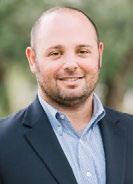


MICHAEL FRIED (P. 43) is the President of All American Public Adjusters, LLC., a licensed and appointed insurance claim consulting firm based in Austin, Texas. He has extensive experience as an independent insurance adjuster, is currently an active public insurance adjuster, and was a former project manager for one of the largest fire and water restoration companies in the United States. He has IICRC certifications for both water (WRT) and fire damage restoration (FSRT) and is a member of the Clean Trust, and also proudly serves on the Board Committees of both Texas Association of Public Insurance Adjusters and National Association of Public Insurance Adjusters. Over the last 10 years, he has adjusted and/or appraised over 4000 property and casualty claims - commercial, multi-family and residential.
KYLE HERRING (P. 43) is the Vice President of All American Public Adjusters and serves on the board of Texas Association of Public Insurance Adjusters. With nearly 2 decades of experience, he has worked on major disasters across the country and continues to help expand the AAPA business into new territories. He is licensed in TX, FL, GA, NC and PR and has earned Associates in Claims (AIC) and Senior Professional Public Adjuster (SPPA) designations. He is certified through the Institute of Inspection Cleaning and Restoration Certification (IICRC) for Water Damage Restoration (WRT) and Applied Structural Drying (ASD), in addition to being a HAAG Certified Roof inspector.
TRACY MCLAUGHLIN
LUCIANO D’LORIO
(P. 47) is the Managing Director of Cushman & Wakefield’s Quebec operations. He has more than 20 years’ experience in the industry, is a licensed broker by trade, and is an expert on commercial, corporate, and industrial real estate in North America.



(P. 44) was raised in Marin County, CA. She graduated from U.C. Berkeley and went on to do graduate work in television journalism at Stanford University. She worked 8 years as a reporter/anchor for various NBC affiliates. In 2006, she founded Morgan Lane, a boutique brokerage in Marin County, and in 2009, she and Mark McLaughlin bought Pacific Union International which she helped brand, recruit for and grow before selling her interest. Pacific Union became the 5th largest brokerage in the United States and was recently acquired by Compass. She has three children and is a very active, visible member of the communities in which she lives and works.
ROSE-MARY RUMBLEY (P. 48) holds a Ph.D. in communications from the University of North Texas. She is a well-known speaker in Texas and enjoys researching each and every topic. She is a Contributing Editor of and Herstory appears in every issue.

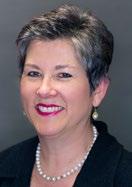
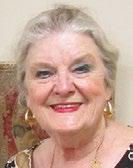
DAVID SIEGEL (P. 26) is a partner at the law firm pf Grellas Shah LLP in California, where he counsels tech startups and investors in general corporate, venture financing, M&A, and other transactional matters. He spent several years practicing complex litigation for a prominent AMLAW 100 firm and also guided various organizations through government funding audits during the Great Recession.

- 7 - / THE NETWORK / JULY/AUGUST 2020
YOU NEED (OR MIGHT WANT) TO KNOW Editor’s note
ANDREW FELDER aafelder@crestpublicationsgroup.com Managing Editor & Publisher
TIMELESS
This was wriTTen in 1869, reprinted during 1919 Spanish Flu Pandemic (from when this photo dates).

KIDS SAY THE DARNDEST THINGS

About Nudity: I was driving with my three young children one warm summer evening when a woman in the convertible ahead of us stood up and waved. She was stark naked! As I was reeling from the shock, my 5-year-old shouted from the back seat, “Mom, that lady isn't wearing a seat belt!”
About Opinions: On the first day of school, a first grader handed his teacher a note from his mother. The note read, 'The opinions expressed by this child are not necessarily those of his parents.'
About Ketchup: A woman was trying hard to get the ketchup out of the jar. During her struggle the phone rang, so she asked her 4-year-old daughter to answer the phone. She said, “Mommy can't come to the phone to talk to you right now. She's hitting the bottle.”
More About Nudity: A little boy got lost at the YMCA and found himself in the women's locker room. When he was spotted, the room burst into shrieks, with ladies grabbing towels and running for cover. The little boy watched in amazement and then asked, “What's the matter,? Haven't you ever seen a little boy before?”
And people stayed at home
And read books
And listened
And they rested
And did exercises
And made art and played
And learned new ways of being
And stopped and listened
More deeply
Someone meditated, someone prayed
Someone met their shadow
And people began to think differently
And people healed. And in the absence of people who Lived in ignorant ways
Dangerous, meaningless and heartless, The earth also began to heal
And when the danger ended and People found themselves

They grieved for the dead And made new choices
And dreamed of new visions
And created new ways of living And completely healed the earth Just as they were healed.
About the Police: It was the end of the day when I parked my police van in front of the station. As I gathered my equipment, my K-9 partner, Jake, was barking, and I saw a little boy staring in at me.
“Is that a dog you got back there?” he asked. “It sure is,” I replied.
Puzzled, the boy looked at me and then towards the back of the van. Finally, he said, “What'd he do?”
About the Elderly: While working for an organization that delivers lunches to elderly shut-ins, I often took my 4-year-old daughter on my afternoon rounds. She was unfailingly intrigued by the various devices of old age - particularly the canes, walkers and wheelchairs. One day I found her staring at a pair of false teeth soaking in a glass. As I braced myself for the inevitable barrage of questions, she merely turned and whispered, “The tooth fairy will never believe this!”

About Dressing Up: A little girl was watching her parents dress for a party. When she saw her dad donning his tuxedo, she warned, “Daddy, you shouldn't wear that suit.”
“And why not, darling?” he asked.
“You know - it always gives you a headache the next morning.”
About Death: While walking along the sidewalk in front of his church, our minister heard the intoning of a prayer that nearly made his collar wilt. Apparently, his 5-year-old son and his playmates had found a dead robin. Feeling that proper burial should be performed, they had secured a small box, then dug a hole and made ready for the disposal of the deceased. The minister's son was chosen to say the appropriate prayer and with sonorous dignity intoned his version of what he thought his father always said: “Glory be unto the Faaather, and unto the Sonnn, and into the hole he goooes.”
PARAPROSDOKIANS
Paraprosdokians are figures of speech in which the latter part of an idiom, proverb or well-known expression is altered to make an unexpected and humorous ending. We’ve used them before in Diversions in . In this issue, look for them in the vertical lines which run up/down the gutters of most of the pages of the magazine. (See this page, for example.) If you haven’t noticed this feature in previous issues of the magazine, you’re in for a treat.
About School: A little girl had just finished her first week of school. “I'm just wasting my time,” she said to her mother. “I can't read, I can't write, and they won't let me talk!”
About the Bible: A little boy opened the big family Bible and was fascinated as he fingered through the old pages. Suddenly, something fell out of the Bible. He picked up the object and looked at it. What he saw was an old leaf that had been pressed in between the pages.
“Mama, look what I found,” the boy called out.
“What have you got there, dear?”
With astonishment in his voice, he answered, “I think it's Adam's underwear!” n
- 8 - / THE NETWORK / JULY/AUGUST 2020
Where there's a will, I want to be in it.
The last thing I want to do is hurt you, but it's still on my list.
Mr. Cockeyed Optimist: Congratulations on another outstanding issue!
Aside from the jokes, I especially enjoyed the articles related to architecture. The piece about legal/contract issues in the COVID-19 context was also really interesting.
Robert Charles, Riverdale, NY
Your Editor's Note is the best of anything you've done, in my opinion. Poignant, timely, though provoking... Brought a lot of mist to my eyes.
Mike Fletcher, Arlington, TX
Sheltering in place like everyone else, I had a lot more time to read the May-June issue. Now I know I will make the time to read every issue. It was that good!
Martha Rzazza, Houston, TX
The Political Corner Diversion (Live and Impersonal) was really, REALLY creative. (Of course, I share the same perspective.) More like that, please!
Brittany Morgan, Austin, TX
Among the many features (of the magazine) that I always enjoy is You Need (or might want) to Know. There’s always something interesting and informative in there. Likewise, I thought the Onomatopoeia diversion was very interesting in a very fun way.
Jessica Carlson, Mesquite, TX
ON THE COVER

THE TRYST
BY PAUL BOND
“A painting inspired by a rainy day stroll with my wife through the Le Marais neighborhood of Paris. While revisiting my photos, I pondered the narrowness of the street and imagined that the tenants in the apartments above might often end up becoming intimate with their neighbors, if only as a result of seeing into each other’s windows over time. This scene quickly evolved in my mind. And, in 2020, this also takes on the added message of the ‘social distance’.”

HELP WANTED
If you’re reading this, you know people in this industry – people who provide products or services, people who could benefit by broadening their customer base, people who will thank you for introducing them to .
You can be employed full time, employed parttime, unemployed, disabled, retired – it doesn’t matter! You can earn generous commissions selling advertising in , Texas’s most widely read real estate publication.
Just call 682.224.5855 or email editor@crestnetwork.com and mention this ad to learn more about this advertising sales opportunity.

/ THE NETWORK / JULY/AUGUST 2020 - 9 -
INB X
“
Mumbai (renamed from Bombay in 1995) is the 7th most populous city in the world with a population of nearly 20,000,000. It is the financial, commercial and entertainment capital of India, but more than 40% of its people live in slums.

THE
CYBERTECTURE EGG AN
AWE-INSPIRING
LANDMARK
FOR THE CITY OF MUMBAI AND FOR INDIA IN THE 21ST CENTURY
The egg symbolizes The beginning of life, the birth of the new. This egg-shaped building - The Cybertecture Egg - is a 13-story commercial building located in Mumbai, India. It was designed by Hong Kong architect James Law with sustainability in mind.

With 355, 209 sq. ft. of office space stacked in 13 stories with highly intelligent building management systems, the building has an an elevated garden and 3 levels of basement parking for up to 400 cars - all in about 15% less space than a traditional office building. The structure of the Cybertecture Egg uses a diagrid exoskeleton. It uses wind turbines and solar photovoltaic panels to generate onsite electricity and there is also a greywater recycling system which uses water for landscaping and irrigation.
The building is predominantly a steel frame structure with a concrete core and basement. They managed to create a structure in the form of a shell that is able to support floor plates that does not need any columns. This is an ultramodern structure with 100% flexibility and the architecture is sleek and computer designed, with engineering that creates a building of extremely high quality and geometric sophistication. Within the building there are series of innovative systems such as "cybertecture health" in the washroom which is designed to keep track of the inhabitant’s health including blood pressure and weight. The data collected may be retrieved and sent to a doctor if deemed necessary. The Cybertecture Egg also allows the building’s inhabitants " to customize" their reality through the use of "cybertecture reality" which allows a customization of one’s favorite view. So you could actually choose to have real time scenery all around your working world if you wanted. This unique landscape is a "jewel" for the new Central Business District of Mumbai and has a striking beauty with magnificent flora. n
A diagrid (a portmanteau of diagonal grid) is a framework of diagonally intersecting metal, concrete or wooden beams that is used in the construction of buildings and roof which requires less structural steel than a conventional steel frame.


/ THE NETWORK / JULY/AUGUST 2020 - 10 -
THE FACTOR
Since light travels faster than sound, some people appear bright until you hear them speak.

Anticipating tomorrow’s workplace challenges, today. KYOCERA Document Solutions Southwest, LLC 469-574-0041 | Kyoceranevill.com ©2020 KYOCERA Document Solutions America, Inc.
YOU NEED (OR MIGHT WANT) TO KNOW YOU NEED (OR MIGHT WANT) TO KN W
ç Donald Trump is an almost perfect living, breathing example of the Dunning-Kruger effect: a president in a time of plague whose ignorance and stupidity are amplified through apparent and obvious mental illness as well as cruelty, compulsive lying, grand immorality, corruption and evil.”

www.salon.com/2020/04/02/our-dunning-kruger-president-trumps-arroganceand-ignorance-are-killing-people
lance cameras. This belief was based on his misunderstanding of the chemical properties of lemon juice as an invisible ink.
THE DUNNING-KRUGER EFFECT
in The field of psychology, the Dunning–Kruger effect is a cognitive bias in which people with low ability at a task overestimate their ability. It is related to the cognitive bias of illusory superiority and comes from the inability of people to recognize their lack of ability. Without the self-awareness of metacognition, people cannot objectively evaluate their competence or incompetence. “…the miscalibration of the incompetent stems from an error about the self, whereas the miscalibration of the highly competent stems from an error about others."

The psychological phenomenon of illusory superiority was identified as a form of cognitive bias in social psychologists Justin Kruger and David Dunning's 1999 study, "Unskilled and Unaware of It: How Difficulties in Recognizing One's Own Incompetence Lead to Inflated Self-Assessments". The identification derived from the cognitive bias evident in the criminal case of McArthur Wheeler, who robbed banks while his face was covered with lemon juice, which he believed would make it invisible to the surveil-
Other investigations of the phenomenon, such as "Why People Fail to Recognize Their Own Incompetence" (2003), indicate that much incorrect self-assessment of competence derives from the person's ignorance of a given activity's standards of performance. Dunning and Kruger's research also indicates that training in a task, such as solving a logic puzzle, increases people's ability to accurately evaluate how good they are at it.
In Self-insight: Roadblocks and Detours on the Path to Knowing Thyself (2005), Dunning described the Dunning–Kruger effect as "the anosognosia of everyday life", referring to a neurological
condition in which a disabled person either denies or seems unaware of his or her disability. He stated: "If you're incompetent, you can't know you're incompetent ... The skills you need to produce a right answer are exactly the skills you need to recognize what a right answer is."
People with substantial, measurable deficits in their knowledge or expertise lack the ability to recognize those deficits and, therefore, despite potentially making error after error, tend to think they are performing competently when they are not. “Poor performers do not learn from feedback suggesting a need to improve". Individuals of relatively high social class are more overconfident than lower-class individuals.
If I agreed with you, we'd both be wrong.

- 12 - / THE NETWORK / JULY/AUGUST 2020
THE STRATEGIC NATIONAL STOCKPILE
during The firsT decade of the Cold War, the United States accumulated a civil defense medical stockpile at 32 storage facilities. The supplies began to degrade in the 1960s and were disposed of. The stockpile program closed in 1974.
In April 1998, President Bill Clinton read the Richard Preston novel The Cobra Event, a fictional book about a mad scientist spreading a virus throughout New York City. As the result, Clinton held a meeting with scientists and cabinet officials to discuss the threat of bioterrorism. He was so impressed that he asked the experts to meet with senior-level aides at the Department of Defense and in the Department of Health and Human Services. At that time, the government had stockpiles of medications for military personnel, but did not have them for civilians. Shortly after, The Washington Post wrote that Clinton surprised many in Washington at how fast he and his National Security Council moved to change that.
By October, Clinton signed into law a new budget of $51 million for pharmaceutical and vaccine stockpiling to be carried out by the Centers for Disease Control and Prevention (CDC).
The original name was the National Pharmaceutical Stockpile (NPS) program. It was renamed the Strategic National Stockpile (SNS) program with joint management by Department of Homeland Security and Department of Health and Human Services on March 1, 2003. The Office of the Assistant Secretary for Preparedness and Response (ASPR) of the Department of Health and Human Services has managed the Strategic National Stockpile since October 1, 2018.
Its main goal is to protect public health and safety through the control and prevention of disease, injury, and disability in the US and internationally. The CDC focuses national attention on applying disease control and prevention (i.e., infectious disease, food borne pathogens, environmental health, occupational safety and health, health promotion, injury prevention and educational activities designed to improve the health of United States citizens). The CDC also conducts research and provides information on non-infectious diseases, such as obesity and diabetes.
At the beginning of 2020, the SNS contained around $7-8 billion worth of emergency supplies
stored in secret warehouses located strategically around the country. By March 10, 2020, it was reported that the COVID-19 pandemic had already placed significant strain on the stores of masks, medicine, and medical equipment found in the stockpile. Prior to April 3, 2020 the role of the stockpile was to support state, local, tribal, and territorial responders providing potentially life-saving pharmaceuticals and medical supplies for use in a public health emergency severe enough to cause local supplies to run out. Its current role has been to act as a national supplement of medicine and medical equipment to a State's supplies, acting as a "stopgap buffer" when "the immediate supply of adequate amounts of these materials may not be immediately available."
States criticized the lack of availability of medical supplies from the federal stockpile. At a White House press conference on April 2, 2020, Jared Kushner commented "The notion of the federal stockpile was it's supposed to be our stockpile. It's not supposed to be states' stockpiles that they then use." The idea that the stockpile was not a backup for states that run out of supplies was disputed by Governor Laura Kelly of Kansas, among others.

The Centers for Disease Control and Prevention (CDC) is the leading national public health institute of the United States. Headquartered in Atlanta, GA, it is a federal agency and was founded in 1946 under the Department of Health and Human Services, and is the United States' national repository of antibiotics, vaccines, chemical antidotes, antitoxins, and other critical medical supplies.

The description of the stockpile, as listed on its website, was changed the day after Kushner's remarks to better align with them, from:
"Strategic National Stockpile is the nation’s largest supply of life-saving pharmaceuticals and medical supplies for use in a public health emergency severe enough to cause local supplies to run out. When state, local, tribal, and territorial responders request federal assistance to support their response efforts, the stockpile ensures that the right medicines and supplies get to those who need them most during an emergency. Organized for scalable response to a variety of public health threats, this repository contains enough supplies to respond to multiple large-scale emergencies simultaneously."
to:
"The Strategic National Stockpile's role is to supplement state and local supplies during public health emergencies. Many states have products stock-piled, as well. The supplies, medicines, and devices for life-saving care contained in the stockpile can be used as a short-term stopgap buffer when the immediate supply of adequate amounts of these materials may not be immediately available."
Humph!! n
- 13 - / THE NETWORK / JULY/AUGUST 2020
We never really grow up; we only learn how to act in public.
Jared Kushner

THE FACTOR
THE WATER CUBE IN BEIJING


The naTional aquaTics cenTer, known colloquially as the Water Cube is an aquatics center at the Olympic Green in Beijing, China. The facility was originally constructed to host the aquatics competitions at the 2008 Summer Olympics and Paralympics. During the Olympics — where it hosted diving, swimming, and synchronized swimming events — 25 world records were broken in swimming (although these were attributed primarily to controversial body skin swimwear that was widely-adopted by competitors during the Beijing Olympics).

In July 2010, a renovation of the facility was completed, which included the addition of a (130,000 sq. ft.) public water park (pictured here). With Beijing awarded the 2022 Winter Olympics, part of the Water Cube was renovated in 2019 to allow the hosting of curling events.

Although called the Water Cube, the aquatic center is really a rectangular box which is 584 ft. square and 102 ft. high. It is comprised of a steel space frame and is the largest ETFE-clad structure in the world with over a million sq. ft. of ETFE pillows that are only 1/125 of an inch in total thickness. (Ethylene tetrafluoroethylene (ETFE) is a fluorine-based plastic designed to have high corrosion resistance and strength over a wide temperature range.) n
DIVERSI NS THE LIGHTER SIDE OF THE PANDEMIC - PART 2
When this is over…what meeting do I attend first…Weight Watchers or AA?
Never in my whole life would I imagine that my hands would consume more alcohol than my mouth!
People keep asking, “Is Covid-19 really that serious?” Listen up! Casinos and churches are closed. When heaven and hell agree on the same thing, it’s probably pretty serious.
If you receive an email with the subject, “Ding Dong,” don’t open it. It’s Jehovah’s Witnesses working from home.
Home School Day 22: My child asked why I was talking to myself. I told her it was a Parent/ Teacher Conference.
I ordered Chinese food last night. The little Chinese driver came to my door and I went out to meet him. He started shouting, “Isolate, isolate!” I said, “Friend, you’re not that late. I only ordered it 15 minutes ago. “
It’s been such a joy being home with my wife the past two months. We’ve caught up on all the things I’ve done wrong the past 30 years.
Notice from the Association of Psychiatrists: Dear Citizens, During the quarantine it is considered normal to talk to your plants and pets. Kindly contact us only if they reply.
BREAKING NEWS: Wear a mask inside your home is now highly recommended. Not so much to prevent Covid-19, but to stop eating.
The quarantine has turned us into dogs. We roam the house all day looking for food. We are told “no” if we get too close to strangers. And we get really excited about car rides.
Also see 'Advice' on page 29.
/ THE NETWORK / JULY/AUGUST 2020 - 15War does not determine who is right –only who is left.
U.S. Recycling is in a Crisis.
So let's fix it, shall we?
Sad news: Due to di erent and confusing labels on recycling bins, U.S. recycling is in trouble. But don't despair — help is on the way!

Good news: The nonpro t Recycle Across America® has created standardized recycling labels that make it easy to recycle right! Millions of standardized labels are already being displayed on recycling bins society-wide — in airports, stadiums, schools, national parks, businesses, and homes. The standardized labels are proving to be the most important and e ective way to x this crisis.

You can help - text FIX IT to 40649, and when someone o ers you single-use plastic like a plastic bag or straw, please, refuse it, don’t use it!™


To learn more about the standardized labels for recycling bins and how to recycle right, visit RecycleAcrossAmerica.org.





Text FIX IT to 40649
to ask community leaders to join the
t solution to x the confusion at the bin.
 Kristen Bell
Kristen Bell
recycle
Spokesperson
Actress and Volunteer “Let’s
right!®”
Recycle Across America is a 501(c)(3) nonprofit organization dedicated to expediting environmental progress by introducing society-wide standardized labels on recycling bins to make it easy and possible for the public to begin to recycle right® – wherever they might be.
"Let's recycle right ! " ® Society-wide standardized labels on bins make it easy.
Message and data rates may apply. Text STOP to cancel or HELP for help. Go to recycleacrossamerica.org/privacy-policy for privacy and terms
nonpro
*ZeroDelay™ technology which powers Widex PureSound™ is more than four to seven milliseconds faster than other hearing aids tested. Data on file.





WHY DOES A HEARING AID HAVE TO SOUND LIKE A HEARING AID? IT DOESN’T ANYMORE. Hear pure, natural sound. With the ZeroDelay™ pathway, WIDEX MOMENT™ processes sound faster than any other hearing aid on the market,* eliminating the distortion that produces the unnatural “hearing aid” sound. Experience the WIDEX MOMENT™ difference for yourself. Take a free online hearing test at widex.com/online-hearing-test. ACTUAL SIZE WIDEX.COM
TR E DAT: TEXAS TRIVIA
The red, white and blue in the Texas flag represent courage, liberty and loyalty.
Lubbock County was founded in 1876. Like the city of Lubbock, it was named after Thomas Saltus Lubbock, former Texas Ranger and brother of Francis Lubbock, governor of Texas during the Civil War. Lubbock is the 11th most populous city in Texas (with a population of just under 256,000 in 2018).


The Texas Rangers is the oldest law enforcement agency in the United States.
Texas is the only state to celebrate independence from a country other than England.


Texan troops were defeated in 1836 by Mexican President Antonio López de Santa Anna at the Battle of the Alamo in San Antonio

Texan settlers officially declared the state’s independence, forming the Republic of Texas, though Mexico did not recognize its sovereignty.
The name ’Texas’ means ‘friends’ or ‘allies’ in Caddo, an old language. ‘Tejas’ was used by the Spanish in referring to the Caddo themselves to their region in East Texas.
A legal holiday in Texas, March 2 commemorates both the convention at Washington-on-the-Brazos held on this day in 1836 (when delegates prepared for the separation of Texas from Mexico), and the birthday of Sam Houston (1793-1863) who later led the Texans to victory over the Mexicans in the battle of San Jacinto. The convention formed an interim government, drew up a constitution, and made Sam Houston commander-in-chief of the Texan military forces. But their work was interrupted by the invading Mexican army. It wasn't until the following month that the Republic of Texas forced the issue of independence at the battle of San Jacinto. March 2 is also known as Sam Houston Day and Texas Flag Day, although these are "special observance days" rather than legal holidays. This period in Texas history (beginning with the Washington-on-the-Brazos convention and ending with Sam Houston's decisive victory at San Jacinto), is celebrated each year during "Texas Week."


Texas attempted several times to negotiate annexation to the United States and was finally admitted in 1845, which sparked the Mexican-American War in 1846. Mexico ultimately ceded its claim over Texas in 1848, drawing the border at the Rio Grande.
The Flagship Hotel in Galveston is the only hotel in North America that was built entirely over water

Texas today has an area of 268, 820 square miles and a population of 28,995,881. By area and by population,

Texas is the second largest state in the U.S. (it is about 7% of the total area of the U.S. but only 40% the size of Alaska.)

/ THE NETWORK / JULY/AUGUST 2020 - 18 -
Knowledge is knowing a tomato is a fruit. Wisdom is not putting it in a fruit salad.
éThomas Saltus Lubbock
éFrancis Lubbock
Dwight D. Eisenhower was the first American president to be born in Texas.
TEXAS IS THE ONLY STATE TO ENTER THE U.S. BY TREATY RATHER THAN BY ANNEXATION. IT BECAME THE 28TH STATE IN 1845.
THE LARGEST COUNTY IN TEXAS IS BREWSTER – 6,193 SQUARE MILES, OR ROUGHLY THE SIZE OF CONNECTICUT. (YOU COULD FIT 3 DELAWARES IN BREWSTER COUNTY!)
WUHAN – A WORLD CLASS CITY Feature




wuhan is The capiTal, largest and most populous city of Hubei Province in the People's Republic of China. If you never heard of it before the COVID-19 pandemic, you are far from alone


It is only the sixth most populous Chinese city. It is the 9th most populous according to Wikipedia and the 11th from another source. (See the companion piece on page 21 and see how many of China’s biggest cities you never heard of as well as the reason for the discrepancies in numbers.)
It is much MUCH more than the home of the wet markets that we’re told were the source of the coronavirus. It is the political, economic, financial, commercial, cultural and educational center of Central China (and it is a sister city of Pittsburgh, PA). It is also a major transportation hub, with dozens of railways, roads and expressways passing through the city and connecting to other major cities. Because of its key role in domestic transportation, Wuhan is sometimes referred to as "the Chicago of China" by foreign sources.

/ THE NETWORK / JULY/AUGUST 2020 - 19They begin the evening news with “Good Evening”, then proceed to tell you why it isn't.
é Qintai Center.
é Wuhan Xibeihu Area.
é Wuhan Bridgehead Central Business District.
é Wuhan Skyline.
ç Hankou District.
é Wuhan Greenland Center.
It has three national development zones, four scientific and technological development parks, over 350 research institutes, 1,656 high tech enterprises, numerous enterprise incubators and investments from 230 Fortune Global 500 firms. The city is home to multiple notable institutes of higher education, and, in 2017, it was designated as a Creative City in the field of design by UNESCO. Wuhan is classified as a Beta world city by the Globalization and World Cities Research Network.


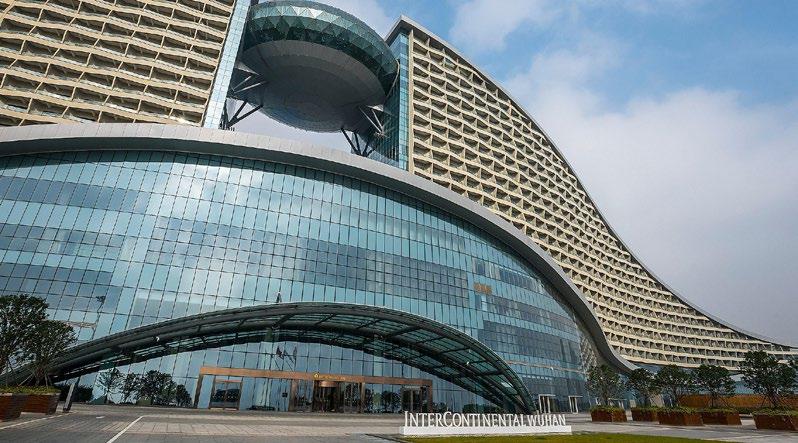



/ THE NETWORK / JULY/AUGUST 2020 - 20 -
To steal ideas from one person is plagiarism. To steal from many is research.
é Han Show Theatre.
é Haining Leather City.
é Yellow Crane Tower.
é Yingwuzhou Bridge.
é Huawei Wuhan Research Center. ê Intercontinental Hotel - Wuhan.
The "Golden Waterway" of the Yangtze River and the Han River traverse the urban area and divide Wuhan into the three districts of Wuchang, Hankou and Hanyang.
Wuhan has always been China’s central thoroughfare –linking goods and people from across the country and beyond. It has a long and important role in the history of the Chinese nation and its people.






From the 1860s it became one of the most cosmopolitan places in China with about 15 countries establishing their embassies in the city.
These pictures – the buildings and skylines of Wuhan - paint a very different and beautiful picture of a city we’ve come to know only because of the world’s most recent health disaster. n
/ THE NETWORK / JULY/AUGUST 2020 - 21I thought I wanted a career. Turns out I just wanted paychecks.
é Northward view from Wuchang.
é Hanjie Wanda Square.
é Wuhan Energy Centre.
é Zhang Zhidong Museum.
é Huawei Wuhan Research Center. ê Intercontinental Hotel - Wuhan.
THE 10 LARGEST CITIES OF CHINA*




2 BEIJING
11,716,620 PEOPLE
AREA – 1,600 SQUARE MILES
1 SHANGHAI
22, 315, 474 PEOPLE AREA – 15,000 SQUARE MILES
Shanghai is the most populous and wealthiest city in China. With a name synonymous with world trade, Shanghai has the largest and busiest port in terms of containers and cargo tonnage, a grand business district, two large airports (Pudong and Hongqiao), the world's fastest train (the Maglev), and a network of elevated highways.
Beijing is large primarily because it is China's capital. It is actually China’s largest city by area, as Shanghai’s urban population is more concentrated. It is a political, educational, and cultural center, with light industries (science, technology and research) dominating over mass manufacturing. Beijing has the world's largest airport, and an extensive, mostly new subway system, but ongoing traffic congestion issues. The Forbidden City still features strongly in the core of its 6-ringroad concentric layout.
5 SHENZHEN
10,358,381 PEOPLE
4 GUANGZHOU
11,071,424 PEOPLE
AREA – 1,500 SQUARE MILES
Guangzhou (Canton) is a mighty manufacturing base, drawing millions from the countryside to work in its factories. Vast quantities of clothing, electronics, plastic goods, and toys are shipped from Guangzhou all over the world. A city that has sprung up recently with China's economic boom, it t is the richest city in mainland China per capita.
AREA – 700 SQUARE MILES
Shenzhen, located in between Guangzhou and Hong Kong. is a huge manufacturing center that has seemingly sprung up overnight. Feeding off the success of its neighbors, it is ranked fourth in China for industrial output, manufacturing higher technology products than Guangzhou in general, and with several of its own successful sunrise companies.
8 CHONGQING
7,457,600 PEOPLE
AREA – 1400 SQUARE MILES
Chongqing is famous for its fog and mountains, and the Yangtze River cruise. Huge infrastructure and industrial investment has made it one of China’s 10 largest cities in the last 5 years. It is mainland China’s most densely populated city.



*Editor’s Note:
9 CHENGDU

7,415,590 PEOPLE
AREA – 4,749 SQUARE MILES
Chengdu is an exception among large Chinese cities. The largest city in mostly mountainous or arid West China, it is a concentration of the population of the fertile Sichuan Basin. The pace of life is the most relaxed of China's large cities. It is the only large city in huge Sichuan Province, so the province's over 80 million people gravitate there.
These population estimates and projections come from www.worldometers.info/ demographics/china-demographics. Information on the population of each city varies significantly from source to source, in part due to the geographical areas of each calculation (provinces, cities, counties, etc.). The numbers here similar to the city, rather than the metropolitan area, statistics in the U.S. If the equivalent metropolitan area numbers were presented, several other cities would fill in part of this list.
6 WUHAN

9,785,688 PEOPLE
AREA – 600 SQUARE MILES
Wuhan is an interesting large city in the center of the heavily-populated half of China. It is now one of China’s main high-tech, education, and financial centers.It has long been a transportation hub, because it is in the middle of the long navigable part of the Yangtze River between Shanghai and Chongqing. The people are unusually friendly compared to those in other cities.
10 NANJING
3 TIANJIN
11,090,314
PEOPLE AREA – 1,100 SQUARE MILES
Tianjin is a huge port and manufacturing center on the Bohai Gulf, with a significant history due to its key location on the Grand Canal, linking the Yangtze and the Yellow River. Huge foreign and national investment in manufacturing have made it China’s third largest city.

7 DONGGUAN
8,000,000 PEOPLE
AREA – 600 SQUARE MILES
Dongguan is a little-known but huge manufacturing city, between Guangzhou and Shenzhen, ranked fourth in China for exports. It has also grown phenomenally in the last couple of decades. It employs huge numbers of rural factory workers, producing electronic items and other hardware, like computer peripherals. It is the poorest of China’s large cities, dominated by low-wage-earning migrant factory workers.
7,165,292 PEOPLE AREA – 600 SQUARE MILES
Nanjing is the capital of Jiangsu province of the People's Republic of China and the second largest city in the East China region. Nanjing in Chinese quite literally means 'Southern Capital'. It has alternated with Beijing as the capital of big empires and modern governments throughout history. It has a prominent place in Chinese history and culture, having served as the capital of various Chinese dynasties, kingdoms and republican governments dating from the 3rd century to 1949. n
- 22 - / THE NETWORK / JULY/AUGUST 2020
In filling out an application, where it says, ‘Emergency contact’, I put ‘doctor’.
Feature
HOSPITALITY CONSTRUCTION: A LONG-TERM BET DURING UNCERTAIN TIMES

The coVid-19 ouTbreak has affected nearly every industry in the United States, but perhaps the one that has been impacted the most has been the hospitality community. Between limited travel, new legal restrictions, and a generally slowed-down economy, many hotels have been forced to make the tough choice between closing down entirely or operating with significantly fewer guests (and possibly, additional expenses).
As STR’s Senior Vice President, Vail Ross, describes, “from a demand standpoint, it’s down significantly.” In fact, according to estimates from April, demand may be down as much as 68 percent. For hotels, most of which require at least a 55 percent average occupancy rate in order to remain financially viable, this sudden drop in demand has created myriad financial challenges.
However, while there is no denying that the current drop in interested guests is a widespread industry issue, there seems to be at least one silver lining: the demand for new hospitality construction has remained largely uninterrupted. Across the United States, new construction for the hospitality industry, most of which has been planned for months or even years, is still going on as planned.
“All of the hotels that are currently under construction have not slowed down whatsoever,” explains Ross, “We have actually exceeded our prior peak back in 2008, just before the financial crisis.”

To some, continuing with these projects might be considered somewhat risky, especially if the recovery from the current economy is slower than expected. However, “the confidence that this asset class does have from an investment community” says Ross, is one of the reasons the projects in-progress are still considered financially viable, “the funding is already there. The labor is there.” Hospitality investors have recognized long-term trends and though the current financial situation is almost unprecedented, these trends can still be expected to eventually resume.
Some of the subsectors of the hospitality industry currently hurting the most include boutique (generally small) hotels, destination stays, with opportunities emerging that involve the creative reuse of already existing hotels that
may have become functionally or financially obsolete due to the pandemic.
However, even with this apparent silver lining, most hotel financiers are anticipating that recovery will still take some time “It wouldn’t be a surprise if we didn’t see occupancy rates return to their previous levels until 2024, maybe 2025,” Ross explains.
Factors such as a changing economy, hesitance from the public, and people’s desire to see new places after staying at home for extended periods of time, can all make the profitability of these endeavors difficult to project. Unsurprisingly, the firms that are able to be flexible and adapt to a constantly changing landscape are the ones that will be best positioned for success.
Insights
-Occupancy was down 63.9% overall to 24.5% in April.
-Room Demand collapsed by 68.3% .
-Average Daily Rate nationwide is down 44.4% to $73/night.
-The crucial RevPAR measure collapsed 79.9% to $18.
-And room revenue overall down 82.4%.
-Watch the entire conversation with Vail here.
-Access the transcript here.
“We’ve seen the brands be quite creative with getting some cash flow and that these hotels are operating on skeleton crews, doing what they can to remain open,” Ross says, admiring the adaptability her firm has noticed through-
ADAM GOWER adam@gowercrowd.com
Adam Gower Ph.D. is an authority on content marketing and online communications for the real estate industry.
out the industry, “They know that as soon as things start to open back up, they can begin to ramp up.”
Across the industry, hotels have also noticed a need for new marketing strategies, shifting marketing budget into digital campaigns has proven to be particularly effective. Emphasizing safety and cleanliness, using social media and other outreach strategies, and working with essential workers have all helped certain brands reach their target audience. According to Ross, “The brands have done a phenomenal job in coming up with these campaigns and really humanizing ads.”
In Nashville, one of the creative ways Ross has seen people adjusting to this crisis has involved "drive-in" music night. A local hotel is hosting a stage in their parking lot where singer songwriters play and people drive in to watch, staying in their cars to listen to the music. The hotel puts on curb delivery of food and drinks or visitors can bring their own and everyone is asked to make a donation to the songwriter. It is a way to get people out again in a safe way, supporting the community and oftentimes some of the proceeds go to first responders.
These shows, and other creative alternatives like them, help demonstrate the hospitality industry’s unique ability to adapt to sudden changes. Demand, in every industry, is constantly changing. If suppliers (hotel developers) can adapt their models in order to address these changes, whether caused by a viral outbreak or not, they can continue to find success in unexpected places.
(Learn more at www.gowercrowd.com) n
- 23I
didn't say it was your fault, I said I was blaming you.
Feature
césar pelli (1926 – 2019) was an Argentine architect who designed some of the world's tallest buildings and other major urban landmarks. Two of his most notable buildings are the /1/ Petronas Towers in Kuala Lumpur and the /2/ World Financial Center in New York City. The American Institute of Architects named him one of the ten most influential living American architects in 1991 and awarded him the AIA Gold Medal in 1995. In 2008, the Council on Tall Buildings and Urban Habitat presented him with The Lynn S. Beedle Lifetime Achievement Award. (Both Pelli and I.M. Pei (who is featured on page 38) appeared in a memorial in the September-October 2019 issue of .)


He married acclaimed landscape architect Diana Balmori, who worked as a partner at his company. In 1952, they moved to the United States and he became a naturalized citizen in 1964. After his graduation from the University of Illinois School of Architecture, Pelli worked for Eero Saarinen (see
CÉSAR PELLI THE EVOLUTION OF THE SKYSCRAPER
January-February 2020 issue of ) in Michigan, for ten years. While with Eero, he worked on the TWA terminal (see Amazing Buildings in the September 2018 issue of ) at /3/ John F. Kennedy International Airport and the Morse and Stiles colleges at Yale University.

Pelli designed his first landmark building with the /4/ Pacific Design Center in West Hollywood, CA, which was completed 1975 and became known by the locals as the "Blue Whale". In 1977, he became the dean of the Yale School of Architecture in New Haven, CT and
Women will never be equal to men until they can walk down the street with a bald head and a beer gut, and still think they are sexy.
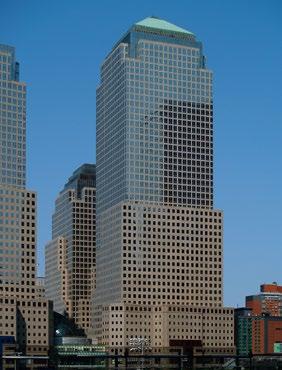
- 24 - / THE NETWORK / JULY/AUGUST 2020
Profile
ADRIENNE ARSHT CENTER FOR THE PERFORMING ARTS
“The desire to reach for the sky runs deep in our human psyche.”
01 02
served in that post until 1984. While there, he won the commission to design the expansion and renovation of the Museum of Modern Art in New York, which resulted in the establishment of his own firm, César Pelli & Associates.


In the 1990s, Pelli designed many landmark skyscrapers. In 1991, he designed /5/ One Canada Square in London (which remained the tallest building there until 2012. ) and /6/ Plaza Tower in Costa Mesa, CA. In 1995, he completed the /7/ NTT Headquarters in Tokyo. The Petronas Towers (for which Pelli received the Aga Khan Award for Architecture) were completed in 1997 and were the world's tallest buildings until 2004.


Pelli's design for the /8/ National Museum of Art in Osaka, Japan, was completed in 2005, the same year that Pelli's firm changed its name to Pelli Clarke Pelli Architects to reflect the growing roles of senior principals Fred W. Clarke and Pelli's son Rafael.


/9/ The Cira Centre in Philadelphia was completed in 2006, as was the Adrienne Arsht Center for the Performing Arts in Miami, Florida. In 2008, Pelli was given an honorary Doctor of Arts degree by Yale University. That same year, he received the Lynn S. Beedle Lifetime Achievement Award from the Council on Tall Buildings and Urban Habitat (CTBUH). In 2012, he was honored with the platinum Konex Award for architecture and the diamond Konex Award for visual arts.
Major projects completed in the 2010s included /11/ The Landmark in Abu Dhabi (2013), /12/ Sevilla Tower in Seville, Spain (2015) and /13/ Salesforce Tower in San Francisco (2018). Salesforce Tower was named the world's best tall building by CTBUH in 2019 (see September-October 2019 issue of .) n




- 25 - / THE NETWORK / JULY/AUGUST 2020 Behind every successful man is
woman. Behind the fall of a successful man is usually another woman.
his
03 04 09 11 12 05 13 07 06 08
CORONAVIRUS AND COMMERCIAL LEASES A POTENTIAL PATH FORWARD



when iT comes To the current COVID-19 pandemic, the word “unprecedented” is thrown around perhaps too frequently. But when it comes to the impact on commercial leases, “unprecedented” is far from an overstatement.
For commercial tenants – particularly ones with consumer-facing businesses (e.g. restaurants and retail) – coronavirus has hit particularly hard. Even with the economy “opening up” in many places, these businesses cannot operate the way they once did. With lower profit margins, many tenants are looking at how to handle their onerous lease obligations. And many commercial landlords are equally fearful as to how this will impact their income streams.
STATE LAWS
While many states and municipalities put restrictions on the types of terms that can be put into residential leases, commercial leases have fewer such restrictions. As a result, particularly when we are talking about small businesses with little negotiating leverage, commercial leases tend to favor landlords.
When it comes to lease provisions that would allocate rights due to the pandemic, most people have been looking to force majeure clauses, or clauses that excuse performance in the event of an “act of God.” Unfortunately for many commercial tenants, it is quite common for commercial lease force majeure clauses to excuse all performance except for the obligation to pay rent.
While commercial leases may not provide much of a defense for many commercial tenants, there are some state law contractual doctrines that landlords and tenants should be aware of. For example, impossibility and impracticability doctrines allow a party to be excused if performance is impossible or exceedingly difficult (not merely economically difficult) but there is little precedence to apply these doctrines to commercial leases. There is some precedent for expanding these defenses in wartime, which may be the closest analogy to what we now face.
Another state law doctrine to which tenants may look is frustration of purpose. Generally, frustration of purpose applies where some supervening event utterly defeats the purpose of performance under a contract (such as a lease) and where the nonoccurrence of such event was a basic assumption for entering into the contract. Here, the “supervening event” is not simply coronavirus, but the panoply of regulations that have come with it. And particularly for restaurants and retail, the argument is that shelter-in-place orders and other drastic restrictions on occupancy and use of commercial properties have defeated the purpose of the leases.
Some tenants may have an easier time with this argument. For example, for restaurants whose rent payments are tied to gross revenue from a particular activity (i.e., food sales), it is easier to show that the inability to operate during a shelter-in-place frustrated the purpose of the lease. Again, however,
this remedy is generally construed narrowly and is not applicable where mere economic hardship is the issue, especially as economies reopen.
It is too early to tell how courts around the country will be applying these various doctrines and if there will even be any consistency to it. Parties cannot rely on the way the law has been applied in the past in this area to plan for the future with any confidence.
EVICTION MORATORIUMS
To give some measure of relief, some states and localities (both in Texas and nationwide) have put into place eviction moratoriums. Some of these are more generous than others. But moratorium programs are generally little more than a band-aid.
All that is happening while a moratorium remains in place is that commercial tenants are building up a mountain of debt. What happens after the moratorium is lifted? The tenant has to start paying this debt back. Where is that money supposed to come from? For many of the hardest hit businesses, you are now asking them to pay higher expenses with what will be assuredly lower revenues.
On the other hand, of course, commercial landlords have their own obligations to pay mortgage and other expenses. A moratorium on evictions means that landlords have their revenue stream cut off, while no similar programs are in place to protect them in terms of the payments of their own expenses.
/ THE NETWORK / JULY/AUGUST 2020 - 26 -
Feature
A clear conscience is the sign of a fuzzy memory.
MITAL MIKADIA mm@grellas.com DAVID SIEGEL dsiegel@grellas.com
Mital Mikadia and David Siegel are partners in the law firm of Grellas Shah, LLP.
OTHER SOLUTIONS BEING CONSIDERED

Some states are looking past eviction moratoriums towards a longer-term solution. California’s SB 939 would allow certain small businesses to force their landlords to renegotiate their leases and, if unsuccessful, would allow the tenant to break the lease without penalty.

It is unsurprising that there is outcry over this bill. The law would essentially shift all of the bargaining power from landlord to tenant in a way that goes far beyond merely helping tenants navigate through the current crisis. With a soft commercial lease market, tenants may be incentivized to break their leases and look for cheaper rents elsewhere.
An alternative proposal would assist small businesses through a $25 billion economic recovery fund which could be used, among other things, for com mercial rental assistance. Some have hailed this as a ‘more reasonable’ solution than SB 939. But is it? Taxpayer funds would be used to essentially make commercial landlords whole.
This would disincentivize landlords from negotiating with tenants. Why negotiate when the government will pay? Moreover, it uses taxpayer funds to guarantee landlords their full profit margins. Tenant rental assist ance programs almost always require the tenant to demonstrate financial need for the assistance. But the ultimate beneficiary of the funds – the landlords – need not show the same.
These proposals present two stark choices; 1) shift all of the power to tenants to remake the commercial lease landscape; or 2) use taxpayer money to prop up the commercial lease business.
While bold, these proposals both go too far, which is not in the public’s interest. There is certainly a good argument for government involvement in commercial leases in this unprecedented time, as there is a public interest in keeping small businesses afloat. But any relief should be narrowly tailored to that interest.
If we are going to use taxpayer money to pay commercial landlords, such funds should be limited to what is needed for the commercial landlords to meet their obligations – not to make huge profits on the backs up taxpayers. And if we are going to give tenants the power to force lease negotiations, it should equalize power, not shift it all to tenants. For example, the government could find ways to reduce the penalty of terminating a lease, thus incentivizing everyone to renegotiate instead of allowing unilateral termination.
Unprecedented times and unprecedented problems call for novel solutions. No one knows how traditional state law doctrines will be applied, leaving a lack of predictability. The temporary band-aid of eviction moratoriums is a short-term solution that is already being lifted. That leaves state and federal governments with the task of coming up with solutions, ones that should be limited and narrow – not as a way to choose winners and losers. n

/ THE NETWORK / JULY/AUGUST 2020 - 27 -
to skydive unless
You do not need a parachute
you want to do it again.
REAL ESTATE F THE FU URE
SEAORBITER A REVOLUTIONARY OCEAN SKYSCRAPER
designed by world-renowned French architect Jacques Rougerie, the 170 feet tall SeaOrbiter will be the first vertical skyscraper ship of its kind. Two-thirds of the spectacular vessel is underwater, perfect for accommodating a team of 18-22 researchers who will be able to spend 24 hours a day underwater.



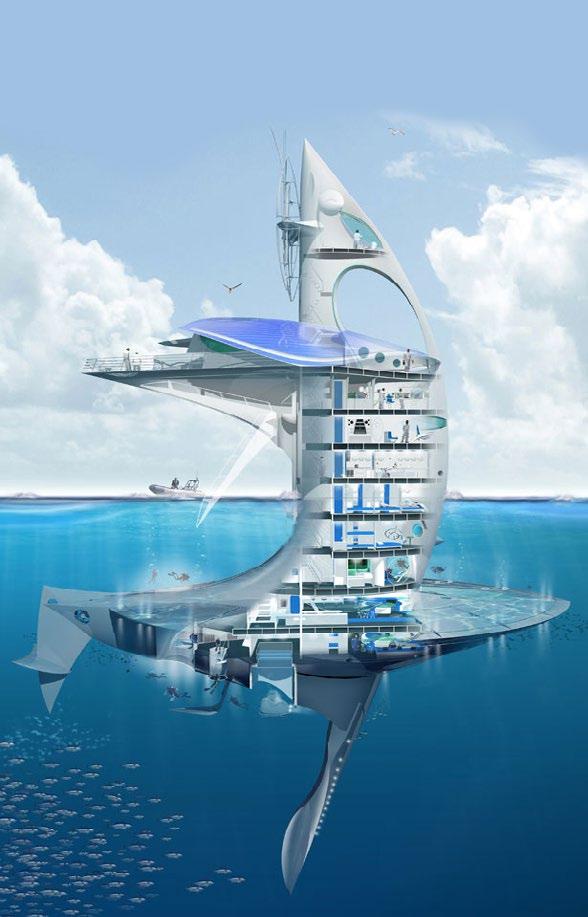
Researchers will use the facilities for a variety of purposes, including studying marine biology and climate change, looking for shipwrecks, and even utilizing pressurized environments to simulate being in space for astronauts. To top it off, the craft is completely sustainable with its power coming from solar, wind and waves.
“One of the first users will be the science community,” says Rougerie. “It’s designed to explore the ocean in a new way, mainly spending time under the sea, giving people the opportunity to live under the sea for a very long time, to observe, to undertake research missions, like marine biology, oceanography and climate issues.”
After over 30 years of research into marine architecture, the $52.7 million SeaOrbiter project has its funding secured and construction is slated to begin by the end of the year.
Rougerie bases his research on bionic architecture, in accordance with principles of sustain-
able development, aiming at emphasizing the role of the sea in the history of the humanity. He builds underwater habitats and laboratories, aquatic centers, transparent shell vessels, subaquatic museums and conceives underwater living areas. In 2008, Rougerie was elected to the Institut de France - Académie des Beaux-Arts and in 2009, he was awarded the Légion d'Honneur.
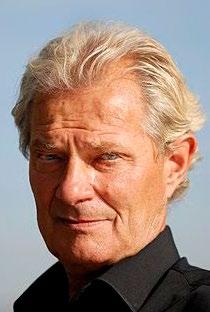
- 28 - / THE NETWORK / JULY/AUGUST 2020
Money can't buy happiness, but it sure makes misery easier to live with.
Feature
“It is from the ocean that will be born the destiny of civilizations to come.”
All
pictures © JacquesRougerie Foundation and are printed here with permission.
Rougerie
There's
Planetary Challenges
The ocean is at the heart of our planet. It is 71% of the Earth’s surface.
It is 97% of the Volume of all of the Earth’s water. Under its surface is 80% of the Earth’s life.
The ocean regulates the climate.
It absorbs 30% of CO2 produced by humans.
It produces 85% of the world’s oxygen.
It stores 90% of additional heat.
The ocean feeds us.
2.6 billion people depend on the ocean as their primary source of protein.
3 billion people depend on marine and coastal biodiversity for their livelihoods.
so they can't get away.
90% of global fish stocks are fully or over exploited.
The ocean remains largely unknown. 95% of the ocean is still unexplored. 85% of marine diversity is undiscovered.
90% of marine resources are unexploited.
The ocean is a source of global wealth.
It is estimated that the U.S. has $24 trillion in ocean assets.
The U.S. has $2.5 trillion in ocean goods and services.
The ocean would be ranked 7th in the world if it were an economy in its own right.
The ocean is a unique opportunity for a new emerging blue economy. 95% of exported goods in the world are transported by sea.
200 million people are employed by the maritime fishery section.
80%of all future jobs are yet to be created. n
DIVERSI NS
INTERVIEW ADVICE

There is a gap in your resume... What were you doing in 2020?

I heard some positive information from a doctor on TV saying that, in this time of Coronavirus, by staying at home, we should focus on inner peace. To achieve this, we should always finish things we start, and we will enjoy more calmness in our lives.
I looked through my house to find things I'd started and hadn't finished, so I finished off a bottle of Pinot, a bottle of Champagne, a bodle of Baileys, a butle of wum, tha mainder of Valiumun srciptuns, an a box a chocletz. Yu haf no idr how feckin fablus I feel rite now. Member two hash yer wands, stafe day avrybobby!!!
I was washing my hands...

/ THE NETWORK / JULY/AUGUST 2020 - 29 -
a fine line between cuddling and holding someone down
THE FACTOR
Rotterdam is the second largest city in Holland and unlike any other Dutch city. With its impressive skyline, it is sometimes called 'the Manhattan on the Meuse'. It is a major port, with a trendy nightlife city, sophisticated shopping, and hip art. (In the next issue of , we will focus on the architecture of this modern city.)


MARKTHAL
compleTed in 2014, The Markthal (Market Hall) in Rotterdam in the Netherlands is a sustainable combination of food, leisure, living, and parking - a building in which all functions are fully integrated to celebrate and enhance their synergetic possibilities. A secure, covered square is nestled beneath a large arch, conceived as an entirely new take on a typical market square and its surrounding buildings.


Privately developed apartments arranged into a large arch, strategically allow a private initiative to create a public space. The result is a covered square which features a central market hall during the day and, after closing hours, a lively series of restaurants on its lower levels. It is a hybrid building where visitors are able to shop, eat, enjoy a drink, live, and park their car.

/ THE NETWORK / JULY/AUGUST 2020 - 30 -
I'm not
I used to be indecisive. Now
so sure.
The building has a total floor area of just over a million square feet, with 228 apartments and 1,200 below-ground parking spaces. But its most striking feature is its central market hall, which provides a home for food stalls and shops offering a diverse range of products as well as restaurants, cafés and a supermarket.
Under the 131 ft-tall arch is “Cornucopia”, massively enlarged images of food products alongside flowers and insects, in reference to Dutch still-life paintings from the 17th century. The entire work is over 118,000 sq. ft., with a resolution comparable to a glossy magazine.
The apartments (102 rental and 126 freehold apartments, including 24 penthouses) follow strict Dutch laws regarding natural daylight: rooms that require natural light, such as living rooms and bedrooms, are situated on the outside, with views towards either the River Maas or the Church of St Lawrence, while kitchens, dining rooms and storage areas are positioned on the market side (establishing a connection to the market through windows or a glass floors made of sound and smell-proof triple glazing).
With its unique arched structure, and unusual achievement of turning a private development plan into a public building, the Markthal makes Rotterdam home of a new urban typology, a hybrid of market and housing. n



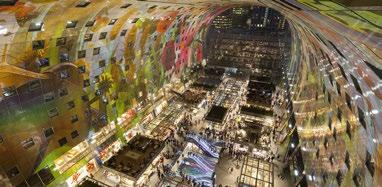

/ THE NETWORK / JULY/AUGUST 2020 - 31 -
You're never too old to learn something stupid.
TITLE YOU NEED (OR MIGHT WANT) TO KNOW AMAZ NG BU LDINGS
ANGELA O’BYRNE aobyrne@e-perez.com

GIVING FILM HISTORY A FITTING HOME: THE ACADEMY MUSEUM OF MOTION PICTURES
Thanks To The coronaVirus, the future of film feels more uncertain than ever. An industry already challenged by shifting viewing habits and the rise of home streaming services must now contend with a pandemic that makes the prospect of sitting in a room with hundreds of strangers for two hours a daunting one. But movies were originally conceived as collective experiences, enhanced by the accompanying sounds of an audience’s simultaneous gasps, communal laughter, and mutual reactions. To properly celebrate and memorialize movie history, one would need to build a real, physical place—a temple that captures the wonder we all feel together when the projector’s running.
Enter the Academy Museum of Motion Pictures, a long-delayed, much-anticipated,

and wildly over-budget project finally set to open in Los Angeles at the end of 2020. A collaboration between some of the world’s most recognized architects— Renzo Piano Building Workshop and Gensler—the project is set to serve as both a headquarters for film’s most prestigious organization and a museum dedicated to the art and science of cinema.
But a global pandemic is far from the project’s first hurdle. The story of the museum’s development mirrors that of a troubled film production: a $100 million over budget, a long history of arguing executives with competing visions, and a constantly shifting release date. In fact, if the Museum does open in December, it’ll be the culmi-
nation of a journey that started more than 90 years ago. Located on Los Angeles’s Miracle Mile, it will join the city’s Museum Row, yet another striking architectural icon in an increasingly surreal landscape and a close neighbor to the swirling stainlesssteel ribbons of the surreal Petersen Automotive Museum.
A combination of new construction and renovation, the Museum makes use of a repurposed 1939 May Company department store building, once an exhibition hall for the Los Angeles County Museum of Art. Itself a renowned Streamline Moderne icon, the May Company building boasts a beautiful golden cylindrical form clad in 350,000 gold-leaf mosaic tiles, which has seen a meticulous and generous renovation.
/ THE NETWORK / JANUARY/FEBRUARY 2020 - 32Feature
To be sure of hitting the target, shoot first and call whatever you hit the target.
Angela O’Byrne, FAIA, is President of Perez, APC, a 70+ year-old architecture, planning, interior design, and construction firm. She is also a Contributing Editor of
All told, the Museum will host 300,000 square feet of exhibition space and two state-of-the-art screening facilities. The heart of the Museum’s collection will feature thousands of artifacts from movie history, including Dorothy’s red slippers from The Wizard of Oz, props from Alien, and a number hand-marked scripts. Additional halls will host rotating exhibitions around themed topics, from renowned directors to the darker and painful corners of film’s often-inequitable history.
However, the real star of the show is the museum’s brand-new centerpiece, a massive concrete sphere structure designed by Renzo Piano. Created with 26 million pounds of concrete, the sphere hosts the museum’s flagship theatre, a 1,000-seat


screening room with capabilities to project a full suite of historic film formats. Bathed in red velvet, the screening room is both retro and cutting-edge. Atop the sphere is a glass-domed terrace—perfect for breezy receptions and offering a clear view of the Hollywood sign. The glass dome is composed of 1,500 shingled glass panels fabricated in Austria. Seemingly hovering on air, the sphere is meant to invoke the feeling of suspension and immersion that one can get from a great film.
As with the film industry, the Academy Museum of Motion Pictures will face plenty of competition. Like the Academy’s flagship Oscars telecast, the organization’s cultural primacy has declined in recent years. Locals craving specialty screenings are already

served by a thriving repertory scene and tourists can visit any number of world-class museums and film-centric hot spots. And in a particularly cruel bit of irony for a building that has been described as a “Death Star,” there’s another movie museum coming to town in 2021: the Lucas Museum of Narrative Art, which will, of course, house a permanent Star Wars exhibit.
The future of how we consume film may still be uncertain, but the Academy Museum promises to tell the stories—both familiar and underreported—about how the medium of film transformed a city’s economy, a country’s myths, and even how we dream. n

/ THE NETWORK / JULY/AUGUST 2020 - 33Nostalgia isn't what it used to be.
A SCHOOL FOR THE TIMES WE LIVE IN
coVid-19 has senT parenTs looking for a safe, high-quality school for their children this September. What if students were able to attend an online school where they gathered in international cohorts based on a common interest and were challenged to engage in project-based learning that had an impact on their local communities? Well, you’d have an exceptional school indeed. This school is the new World Over International School opening this fall through the Maker Learning Network.
This private non-profit school brings the best of online learning, project-based pedagogy, and social-emotional learning together for the first cohorts of students in September, according to Maker Network’s Allison Bravo. Initially, World Over will be serving students in grades 6-8 and will focus on what they’re calling the four P’s: project-based, problem-based, place-based, and personalized learning.
“Our vision is to place students in interest and passion-based cohorts and create microschools where learners from all over the world come together with a common purpose. Students might be artists, athletes, gamers, coders, writers, activists, or an endless array
of others,” said Bravo. World Over will be a departure from the typical online program. “We’re not an online credit factory. The school is interactive in the digital world and in the physical world.”
Maker Learning Network Founder and CEO, Amber Golden Raskin, said that the school is going on a global search for students who want to be part of an international cohort of their peers but are also committed to taking action in their local communities. “Even though we’re an online, virtual program,” said Raskin, “the place-based piece will come into play when our learners demonstrate their learning with impactful work in their local communities.”
In addition to these opportunities, Bravo said these micro-schools will provide an extremely high level of personalized support. “Our learners have access to top tier college counselors,” said Bravo. “This is not to push them to some specific ivy league school, but rather to walk alongside them to see where they want to go.”
Bravo explained that this collaboration between the learner, their academic coach, and counselor is not about SAT scores, but rather about every student having a highquality digital portfolio. “The portfolio is a holistic snapshot of achievement and potential, which creates more equity and access to post-secondary opportunities,” stated Bravo.
Long-term, Bravo said the plan is to expand cohorts and grade levels. The school will also be a course vendor for students wanting to take just one or two courses. World Over will be working with homeschoolers and other schools as a curriculum vendor to serve parttime students.

For international students, they will offer an English Bridge Program, as well as mechanisms where students can earn an American diploma and access to dual diplomas without having a visa or travel permission.
Ultimately, Bravo said World Over is about transforming the student experience, while also transforming their lives and the lives of others.
*To learn more about World Over International School, please visit: www.worldover.org n

/ THE NETWORK / JULY/AUGUST 2020 - 34 -
Change is inevitable, except from a vending machine.
Feature
é Amber Raskin.

- 35 - / THE NETWORK / JULY/AUGUST 2020
CAMILLE RENSHAW
crenshaw@benetlease.com
CEO of B+E, an investment brokerage firm specializing in net lease real estate with offices in New York, Chicago, Atlanta, Denver, Tampa and San Francisco.
coVid-19 is the sTory of 2020. It threatens everyone’s personal health and that is incredibly stressful. A series of dominoes have fallen, impacting supply chains, travel and meetings, basic household and medical supplies.

With regard to Net Lease real estate during this time, property sales remain strong for any single tenant property that remains open for business – those properties deemed essential, like 7-Eleven or FedEx. Net Lease investment increased by 11% in 2019 to a record $78 billion, outpacing the growth of all other commercial real estate sectors. Demand is consistent, but supply is tighter than ever, keeping downward pressure on cap rates.
The national sales volume for Net Lease property is predicted to end flat year-overyear. People will buy and sell stable, low risk real estate, as they must still make investments, complete 1031 exchanges and save taxes, retire, pass along generational wealth, etc. However, principals are looking to trade online and remotely more than ever before.
To buy and sell Net Lease real estate in the current market, we advise the following steps:
1. Review your tenant’s balance sheets.
Do they have the cash to sustain a year of this crisis? Where in the supply chain is your particular property? How does the store rank, and how will it rank a year from now? Don’t believe big sales forecasts unless your tenant makes Lysol.
2. Consider the impact of reduced employee headcount.
How important is it to your property if your tenant reduces headcount at your site?

3. Ask your tenant about their revised marketing budgets. If they cut their marketing budgets, how does that impact your site?
4. Learn who your tenant’s key suppliers are and where they are located. How will a disruption in the supply chain change production and outputs at your facility?
5. Consider how these key factors will improve or lower your tenant’s current credit rating.
COVID-19 AND NET LEASE REAL ESTATE
Generally, credit ratings trail actual revenue shifts by many months. If you believe the rating will drop, you may consider selling before cap rates rise for that tenant. If you believe the rating will improve, you may want to buy more before cap rates catch up.
6. Review the current valuation of your property every quarter throughout the crisis. Ask your real estate broker for help with this step. Do you want to refinance and hold, given the historically low interest rates? Or do you want out of that tenant exposure? And best-case scenario, has your asset surged in popularity in the new market paradigm and do you want to sell for top pricing?
7. Lower risk through a combination of tenant credit and lease term. And sell when these key factors change.
8. Lean on technology to provide solid data and guide your Net Lease trading. In-person meetings, the reading of body language and other cues will be limited as the virus continues to spread. Real-time data, like what B+E tracks and offers for free, is crucial to good and timely decision-making. The Net Lease market is going to become more and more efficient through these technologies, so embrace them now.
9. Buy based on quality of tenant and use in the new market paradigm. Sectors that we currently like:
• most single tenant medical properties including urgent care and pharmacy;
• distribution centers and cold storage;
• light and heavy manufacturing as more demand moves stateside;
• convenience stores and gas stations;
• all car-related uses as people move about strictly in their own vehicles;
• pet and veterinary uses;
• retail uses that cannot be found or serviced properly online like boutique luxury shops and cannabis;
• and superstores that blend retail and industrial uses by allowing in-store shopping, pickup, and delivery service such as Whole Foods or Walmart.
10. Diversifying protects long-term cash flow. Buy an urgent care center, a distribution center and a car wash. Don’t buy three urgent care properties, even though they are currently seeing a surge in revenue. What if virtual doctor visits eclipse this use someday?
11. Sale Leaseback opportunities will abound. As the cycle matures, more of these opportunities will surface. You can build custom leases and custom deals, but you must deeply understand the tenant’s credit. Develop strict criteria now and stick with it.
After billions in Net Lease sales and varying experiences in multiple market cycles, we know that no predictive analysis is perfect, but also no investor regrets decisive, risk-averse action based on real-time data. n
- 36 - / THE NETWORK / JULY/AUGUST 2020
Feature
Going to church doesn't make you a Christian any more than standing in a garage makes you a car.
on may 28, The Dallas Chapter of the American Institute of Architects (AIA Dallas) virtually gathered architects, allied professionals, community leaders, and architecture enthusiasts to celebrate pioneering design and experimental concepts. At the event, AIA Dallas announced three designs to receive its 2020 Unbuilt Design Awards, the highest recognition of works that exemplify excellence in unbuilt projects by Dallas architects. An additional design earned a People’s Choice Award.

This year’s Unbuilt Design Awards recipients were selected by a jury composed of esteemed architects, including Inanc Eray, founding partner of Eray/Carbajo; Jen Maigret, AIA, founding principle at PLY+ and an associate professor of architecture at the University of Michigan; and Jesus Robles, Assoc. AIA, founding

principal of D U S T and an instructor at the University of Arizona. The jury deliberated 42 entries from 30 Dallas architecture firms.
The juror-selected winners were Frisco Public Library, Gensler (Frisco, TX), Converse Guest House, Eric Gonzales (Vogafjos Farm Resort,
THE FACTOR
CUBE BERLIN IN GERMANY

cube berlin (which opened in February of this year) is much more than an interesting visual addition to the cityscape of one of the most prominent squares in Berlin. Integrating 'Internet of Things' ideals into the design will allow the sculptured office building to optimize everything from access and indoor climate control to maintenance and energy-supply - and even the behavior of the tenants (so that it can create efficiencies in temperature).
It will provide a true workplace of the future for its tenants - excelling in sustainability, resilience and opportunities for knowledge sharing. It is the first office built specifically to support 21st century workplace trends with multi-tenant occupancy, crossorganizational communication, activity-based workstations, shared facilities, and dynamic office layouts.
Iceland) and Dallas: Freeways Hacked, Agent Architecture (Dallas, TX). The People’s Choice Awardwas given to the Batu Hotel (5G Studio) based on popular vote. The complete gallery of 2020 entries and recipients here: https:// aiadallasdesignawards.com/ winners n

The building is shaped like a fractured cube which reflects passersby and the sky and also provides terraces for the offices inside. Its impressive innovations include its inventive glazed double-skin façade (which is surprisingly sustainable) and its “digital brain.”

Through its façade and other mechanical systems like solar collectors, Cube Berlin is 25 percent more energy efficient than standard “green” buildings. The “digital brain” controls the structure’s interior and maximizes the efficiency of the building’s systems –actually a single system that’s accessible to the tenants via an app. Users are able to change the temperature in their office, check the charge on their electric car or bike in the garage, or even communicate with colleagues. All of the data gleaned from the app is then processed by the building’s “digital brain,” which learns the habits of the building’s occupants and adjusts its systems to maximize efficiency. Over time, new elements and features can be added so it can grow to embrace new requirements. n

- 37 - / THE NETWORK / JULY/AUGUST 2020 Where there’s a will, there are relatives. AFFILI TE NEWS
Corgan
Luna Studio
ieoh ming pei (1917 – 2019) was a Chinese-American architect - born in Guangzhou but raised in Hong Kong and Shanghai. In 1935, he moved to the United States and enrolled in the University of Pennsylvania's architecture school, but he transferred to the Massachusetts Institute of Technology. After graduating, he joined the Harvard Graduate School of Design (GSD) and became a friend of the Bauhaus architects Walter Gropius and Marcel Breuer. In 1948, Pei was recruited by New York City realestate magnate William Zeckendorf, for whom he worked for seven years before establishing an independent design firm in 1955, I. M. Pei & Associates. In 1966 that became I. M. Pei & Partners in 1966, and in
I.M. PEI A MODERNIST FOR THE AGES





1989 became Pei Cobb Freed & Partners. Pei retired from fulltime practice in 1990. In his retirement, he worked as an architectural consultant primarily for his son's architectural firm Pei Partnership Architects.
Pei's first major recognition came with the /1/ Mesa Laboratory at the National Center for Atmospheric Research in Boulder, CO (which was designed 1961 and completed in 1967). His new stature led to his selection as chief architect for /2/ the John F. Kennedy Library in Boston. He went on to design /3/ Dallas City Hall and

/4/ the East Building of the National Gallery of Art. He returned to China for the first time in 1975 to design a hotel at /5/ Fragrant Hill (Xiangshan). He was the first foreign architect to have his works built in China after the Economic Reform. He designed /6/Bank of China Tower in Hong Kong fifteen years later. (Pei’s father was one of the founders of Bank of China, and the skyscraper is now the center of the city’s well-known night view.)
In the early 1980s, Pei was the focus of controversy when he designed a /7/ glass-and-steel pyramid for the Musée du
Louvre in Paris. He later returned to the world of the arts by designing /8/ the Morton H. Meyerson Symphony Center in Dallas, /9/ the Miho Museum near Kyoto, Japan, /10/ the Museum of Islamic Art in Qatar, / TOP/ the Grand Duke Jean Museum of Modern Art (MUDAM) in Luxembourg, /12/ the Rock & Roll Hall of Fame in Cleveland and the /13/Macao Science Center in China.
- 38 - / THE NETWORK / JULY/AUGUST 2020
Profile
“It has often been said that Britain and America are two nations divided only by a common language.” (Winston Churchill)
TOP 01 03 02 04
I asked God for a bike, but I know God doesn't work that way. So I stole a bike and asked for forgiveness.
In the words of his biographer, Pei won "every award of any consequence in his art", including the Arnold Brunner Award from the National Institute of Arts and Letters (1963), the Gold Medal for Architecture from the American Academy of Arts and Letters (1979), the AIA Gold Medal (1979), the first Praemium Imperiale for Architecture from the Japan Art Association (1989), the Lifetime Achievement Award from the Cooper-Hewitt, National Design Museum, the 1998 Edward MacDowell Medal in the Arts, and the 2010 Royal Gold Medal from the Royal Institute of British Architects.








09 06 08
10 13
12
- 39 - / THE NETWORK / JULY/AUGUST 2020
In 1983 he was awarded the Pritzker Prize, sometimes referred to as the Nobel Prize of architecture. In its citation, the jury said: "Ieoh Ming Pei has given this century some of its most beautiful interior spaces and exterior forms... His versatility and skill in the use of materials approach the level of poetry." The prize was accompanied by a $100,000 award, which Pei used to create a scholarship for Chinese students to study architecture in the U.S., on the condition that they return to China to work. In 1986, he was one of twelve recipients of the Medal of Liberty. He was awarded the 2003 Henry C. Turner Prize by the National Building Museum. In December 1992, Pei was awarded the Presidential Medal of Freedom by President George H. W. Bush. n 05 07
I want to die peacefully in my sleep, like my grandfather, not screaming and yelling like the passengers in his car.
THE RES URCE PAGE

ç COVID-19 has thrown up many economic challenges and one of the most profound impacts will be how we manage and track the virus so that we can continue to return safely into our urban environments and workplaces. Building owners need to fully understand these impacts and data points as it will have a profound effect on their future and present values. The internet and the emergence of Digital Twin technologies is already transforming the building and property asset management industry. How will major asset management companies understand the new environment for returning businesses and their workers post lockdown? This will be vital to landlords, property asset management companies, local, federal and national governments. Each will have to demonstrate safety within urban spaces and failure to understand and recognize this will create a devaluation of this huge global asset class. Some of the world’s leading experts have given their perspective on how this will be managed through Digital Twin technology and the internet of things (IOT). This white paper outlines "The Impact of #COVID-19 on the Implementation of Digital Twins in the Global Building Industry: Perspectives from Expert Practitioners”. https://cityzenith.com/wp-content/ uploads/2020/04/CityzenithWhitepaper-TheImpactofCOVID-19_LowRes.pdf
ç “The virus’ macroeconomic impact is now quite visible in U.S. data,” according to Q2 2020 NAIOP Office Space Demand Forecast. “Since March 2020, COVID-19 has markedly altered the U.S. macroeconomic landscape as states issued stay-at-home orders designed to limit the spread of the disease Workers across multiple industries are staying home, and it is unclear how or when they will return their workplaces. Due to the turmoil in the national economy, rising unemployment and continued uncertainty about future work arrangements, the U.S. office market absorption is forecast to decline into negative territory through the second quarter of 2021.”
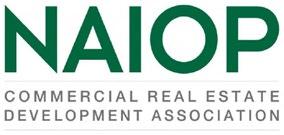
Through that time, macroeconomic forces will continue to put downward pressure on office vacancy rates. The forecast predicts the deepest negative absorption rates (meaning more space is released to the market than is leased or purchased) of approximately 16% t in the third quarter of 2020, and a gradual easing roughly negative 7% later in 2020 and eventually to a positive 1.6% in the third quarter of 2021.
Since office space demand is highly correlated with the state of the economy, authors Hany Guirguis, Ph.D., and Tim Savage, Ph.D., updated the economic assumptions used to forecast office absorption earlier this year. They predicted U.S. Gross Domestic Product (GDP) to contract by 2.5% in Q1 2020 and to contract further by 6.25% in Q2. A gradual return to economic expansion is predicted to occur with forecasted growth of 1% in Q3 2020 and 1.25% in Q4 2020. Average unemployment during 2020 and 2021 is estimated to be 7%, with average inflation around 1%.
ç More than 1,000 corporate real estate professionals from 35 countries have created a vision of the return to work through the CoreNet Global COVID-19 Hackathon, a Virtual Ideation Experience.

When and how would workers return to the offices and the manufacturing plants? What would those places look like when they got there? How would employers ensure safety as we all collectively tried to restart the global economy?

And what would be permanently changed? Has the image of hundreds of people charging down subway tunnels and streets in Manhattan, London and Tokyo on their way to work, from nine to five, become an anachronism practically overnight? And what images would replace it? Temperature screenings, social distance, touchless elevators and one-way directional traffic patterns in the office? Would the new normal ever feel normal?
With a stunning amount of insight, knowledge and forethought, the teams provided written plans and presented a series of webinars illustrating their views of the short and long-term futures of the core components of corporate real estate: Space utilization and metrics; Distributed work; The autonomous workplace; Environment and climate change; Manufacturing and industrial; Workplace wellbeing; and an Executive Summary.
“The end result of all this work is a collective imagining of the workplace and a road map for corporate real estate professionals as they navigate their own paths forward,” said Angela Cain, CEO of CoreNet Global. See all of the reports here: https://www.corenetglobal.org/hackathonresults
é About 73.5 million Americans plan to look for a job that is more pandemic-proof, according to WalletHub’s nationally representative Coronavirus and the Future of the Economy Survey, released today. The survey examined Americans’ thoughts on our economic situation during and after the COVID-19 pandemic, including how comfortable people are with traveling and shopping in person, as well as how soon they think the U.S. will recover financially. The highlights of the survey: Travel and dining will continue to take a hit until there’s a vaccine. Nearly 4 in 10 Americans won't feel comfortable getting on an airplane until there is a vaccine (plus, 27% won’t feel comfortable staying in a hotel and 21 percent won’t feel comfortable dining out).
Most Americans want a non-tax solution for recovery. Around 28% of Americans think that tax rates should increase to fund coronavirus recovery efforts. People view a full recovery in employment as far off. Almost 80% of Americans don't think the unemployment rate will drop to pre-COVID-19 levels until at least the end of 2021, if at all. Many people want to find more stable jobs. 73.5 million Americans plan on looking for a job that is more pandemic-proof. For the complete survey results, go to: wallethub.com/blog/coronavirusand-the-future-of-the-economysurvey/75226/

- 41 - / THE NETWORK / JULY/AUGUST 2020
ZAIN JAFFER zain@zainjaffer.com Founder and CEO of Zain Ventures, a real estate investment firm.

before news of The virus made its way to Texas, the multi-family real estate market was expected to outperform the national average in 2020. But halted work activity and diminished family income brought those projects crashing down, and experts are struggling to predict the extent to which the multi-family sector will suffer.
Despite the obvious doom, there are clear signs of resilience and opportunity in the market, and there’s a growing case for the necessity of the multifamily unit. Employees are working from home with flexible housing needs, graduating students are far away from the thought of a mortgage, and the median age of first-time, single family home buyers is 33, the highest it’s been since 1981
THE DOOM
Like every sector, the multi-family housing market faces some unavoidable challenges. Rent and occupancy rates will vary according to geographic locale, building quality, and the nature of tenant employee. Revenues from class-A properties will fare better as renters are predominantly employed in growth-oriented industries. Those from class-B and C properties will be subject to greater challenges.
This is especially true for class-C properties, whose renters are
WEATHERING A TEXAS STORM
THE EFFECTS OF COVID-19 ON THE MULTIFAMILY REAL ESTATE MARKET

employed in the entertainment and food sectors, among the hardest hit by the coronavirus. Additionally, regions that are dependent on travel for business or leisure —cities like Austin, Dallas, Houston, San Antonio, and Fort Worth—will suffer further economic hardships.
Although there’s potential for millions of people to fall behind on their rent, the U.S. Government’s recent economic relief acts should help to mitigate the domino effect. The Coronavirus Aid, Relief and Economic Security Act, effective to the end of July, augments unemployed benefits and extends coverage to many who are not normally eligible. Furthermore, the Paycheck Protection Program and Health Care Enhancement Act provides low-interest loans for payroll costs and the expenses to small businesses, all of which are forgivable if all employees are kept on the payroll for eight weeks.
THE HOPE
In spite of uncertainties ahead, there are undeniable opportunities facing the multifamily real estate sector. First, a dramatic decrease in tenant turnover is highly unlikely, which will minimize the operating costs and capital investments that accompany securing new tenants. And if the trend of remote work persists post-coronavirus, young professionals will likely increase demand for apart-
ments and have more flexibility with their location.
There’s also been a moratorium on non-essential construction, meaning the risk of over-building will be at its lowest in years. Vacancy rates should remain low, and the market will be driven by demand and quality.
Lastly, the emergency interest rate cuts by the Federal Reserve are an advantage for long-term investors, pension funds, and real estate investment trusts. And for the first time, Fannie Mae and Freddie Mac are offering mortgage forbearance to multifamily property owners in exchange for voluntarily halting evictions.
SIGNS IN THE SKY
Predicting the behavior of the market post-corona is a task akin to predicting the weather, but that doesn’t stop us from trying. After enjoying a decade of high occupancy and income growth, multifamily property owners in Texas are facing the most uncertainty since the Great Recession. Currently, rent collection in Texas is just below normal levels, but stress is building on the system. 2.2 million Texans have filed for unemployment insurance since the inception of the pandemic in March. Though no one can be sure, there are a couple key factors that will provide insight into the severity of the economic downturn for Texas in the months and years ahead.
Naturally, the extent of isolation and social distance measures implemented by local government and by employers will have a lot of weight on how the economy recovers. Federal and state fiscal and policy response will no doubt shape the conditions as well. As a return to work activity is explored, the diversity of local economies and the speed of their recovery will likely foreshadow the direction of the multi-family real estate market.
One specific factor to look at is the length of time major mortgage lenders will continue to suspend mortgage payments, indicating the extent to which the market sector is absorbing the shock of the virus, and how long it might be before a glimpse of normalcy. Finally, the extent to which an area is dependent on oil and gas is likely a telling sign, as that space is likely to experience a double setback.
WEATHERING THE STORM
While the only certainty is uncertainty, there are a number of future-proof measures property owners can take to improve operations and develop long term plans. Maintaining property conditions to the highest standard to appeal to tenants concerned about health risks is a necessary and often capital-intensive task. Investing in virtual tours, and further innovating the real estate experience will help set companies apart.
It’s useful also to consider worstcase scenarios, and develop a backup plan to cover decreased rent and increased interest rates. Lastly, it’s best to begin with research and stand firm in a decision once it’s made, whether the plan is to refinance or to ride out the storm.
Though demand will remain steady for multifamily real estate in Texas, it won’t be immune to the restraints in cash flow and the fluctuations of the market. Coronavirus containment measures have resulted in massive layoffs and shaken consumer confidence. Recovery will likely be slow due to the state’s large share in vulnerable industries. However, rent payment is usually one of the highest priorities for tenants, and will likely result in minimal defaults. Luckily, whether the multifamily sector will continue to be a worthy investment is a question of when, not if.
- 42 - / THE NETWORK / JULY/AUGUST 2020
Going to church doesn't make you a Christian any more than standing in a garage makes you a car.
Feature
n
KYLE HERRING kyle@mytxpa.com

Michael Fried is the President and Kyle Herring is the Vice President of All American Public Adjusters in Austin.
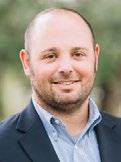 MIKE FRIED mike@mytxpa.com
MIKE FRIED mike@mytxpa.com
MAKING COMMERCIAL PROPERTY INSURANCE WORK FOR YOU
when iT comes To severe weather in Texas, we may get off easy during the fall and winter months, but spring and summer are another story. Storms with damaging winds and hail blow through the Lone Star State from March through November, leaving billions of dollars of destruction in their wake. In 2019 alone, NOAA reported 182 tornadoes and more than 500 hail events in Texas.
For many Texas commercial property owners, dealing with roof damage from hail and high winds is simply a part of doing business. You may have an active insurance claim on a building right now, or perhaps you’ve grappled with the issue in the past. Even if you’ve been lucky enough to have emerged unscathed from previous storm seasons, your roof has definitely been hit with hail before and will eventually be compromised.

How you navigate your insurance coverage and submit your claim for storm-related roof damage can make the difference between enjoying continued success and taking a significant financial hit when it’s time for a roof repair or replacement. Here are three things to consider to avoid common mistakes and achieve optimal results:
1. CODE UPGRADES
So, your roof took a beating in a recent hailstorm, and now it needs to be brought into compliance with energy efficiency and safety codes as part of the repair. It might sound like a hassle, but making these improvements is actually a smart ownership decision. Common code upgrades for roof rehabilitation include installing new above-deck thermal insulation per the International Energy Conservation Code (IECC), replacing old R-22 air-conditioner units with 410-A models based on new EPA freon regulations, or even having to remove multiple existing roof layers down to the deck and bringing the roof up to energy code.
The good news is, while insurance policies generally cover “like for like” replacements and repairs, additional coverage does exist for the cost of bringing structures up to code. However, it’s advisable to review your policy and ensure you have adequate code-upgrade coverage to avoid getting stuck with the bill for high-cost improvements. A basic unendorsed commercial property policy only includes $10k for code upgrades. If you had to add above-deck insulation to a 200,000-square-foot facility, your coverage would be nowhere near what’s required to bring it up to code. In this case, you might need to pivot your loss measures to maximize your benefits as much as possible.
Additionally, you’ll need a team of experts on your side to coordinate and certify the details of your insurance claim to successfully secure code upgrade coverage. Most policies have what they call “professional fees” coverage for the costs of hiring experts such as forensic engineers, meteorologists, thermal drone companies and testing laboratories. It’s critical to review your policy coverage and risk mitigation plan now to proactively address these issues.
2. COSMETIC DAMAGE EXCLUSION
In a nutshell, a cosmetic damage exclusion is this: if a hailstorm impacts your metal roof and causes a dent, and that dent does not reduce the roof’s ability to shed water, your policy will not cover the damages. Even if your roof has sustained functional damage to the structure, if you don’t take the right steps and consult the appropriate professionals when submitting your claim, you might get slapped with a cosmetic denial by your insurance company. Proving that the damage isn’t just cosmetic requires expert analysis and rigorous testing procedures that follow ASTM standards.
With a damaged metal roof, for example, you as the property owner would need to enlist the help of a forensic engineer and a metallurgist who will take samples of the damaged area and submit them for destructive testing and other analyses in an ASTM-certified testing laboratory. There is a proper methodology for documenting the chain of custody for samples when submitting a claim or protesting a cosmetic denial, so everyone involved in sampling and testing should know these proceedures and follow them meticulously. With so many moving parts, it’s extremely beneficial to hire a
qualified, reputable public adjuster to enact a plan and coordinate the retention of all of these experts so you can remain focused on your business.
3. BUSINESS CONTINUITY
When you need to replace or repair your roof, you probably can’t shut down your business for two weeks and claim the income loss. As part of your overall business continuity plan, review your policy to ensure you have adequate “extra expense” coverage to help keep your business up and running during a roofing project while reducing your net income loss claim (this is key). These extra expenses might include payroll for overtime hours, extra light-ing for an overnight crew, or the installation of temporary A/C units so the damaged ones can be replaced while not shutting down your business.
Additionally, if your business continues operating during construction, you must follow proper Occupational Safety and Health Administration health and safety guidelines. From pedestrian walkways, to debris shoots and other considerations, ensure these expenses are included as part of a comprehensive business continuity plan that’s tailored to the coverage within your specific policy.
Dealing with roof damage from hail and high wind can be a stressful situation for any property owner. But by taking a proactive approach to your mitigation and business continuity planning, understanding the details of your coverage and having the right team of experts at your side, it’s possible to maximize the benefits of your commercial property insurance package during storm season in Texas. n
/ THE NETWORK / JULY/AUGUST 2020 - 43 -
Light
This is why some people appear bright until you
them
Insurance
travels faster than sound.
hear
speak.
YOU NEED (OR MIGHT WANT) TO KNOW BY TH3 NUMB3RS: TEXAS DEMOGRAPHICS

RELIGION
The city of Lubbock has the largest number of churches per capita in the country.
AGE AND POPULATION
· 7.1% under 5 years old
· 25.8% under 18 years old
· 12.6% 65 years of age and over
· Veterans - (2014-2018) - 1,474, 232
· Foreign born - 17%
[Source: census.gov/quickfacts/TX (as of 7/1/19)]
INCOME & POVERTY (IN 2018 DOLLARS )
· Median household income - $59,570
RACE AND GENDER
Lakewood Church, the largest of America's churches, is in Houston. Joel Osteen is the pastor.

· 64.4% of the residents of Texas are Evangelical Protestants.
· 21.2% are Roman Catholics.
· 8.1% are Presbyterian, Baptist or Episcopal Protestants.
· 0.1% of the residents observe Orthodoxy.
· 2% of Texans identify as Buddhist, Muslim, Sikh, or others.
· 4.5% claim no religious affiliation.
[Source: worldatlas.com]
· Per capita income - $30, 143
[Source: census.gov/quickfacts/TX (as of 7/1/19)]
EDUCATION
· People over 25 years old with high school degree or higher (2014-2018) - 89.2%
· People over 25 years old with a bachelor’s degree or higher (2014-2018) - 29.3%
[Source: census.gov/quickfacts/TX (as of 7/1/19)]
BOOK REVIEW
in This day and age, home buyers and sellers have greater access to information than ever before. While knowledge of the market is helpful in real estate sales, most people still lack a key aspect: expertise. Tracy McLaughlin is an insider with more than a decade of nationally ranked experience. She advises on the smartest investment decisions regarding which home to purchase, when to buy and sell, what improvements to make in anticipation of selling and how to find the right real estate agent. This book is full of practical answers and solutions to the field’s obstacles and challenges. It is for anyone looking to gain insight into the sale and purchase of homes –and it is available as a prize in the issue’s contest. (See the inside back cover.) n

[Source:suburbanstats.org/population/howmany-people-live-in-texas ]
DIVERSI NS EL AL
The Israelis are developing an airport security device that eliminates the privacy concerns that come with full-body scanners.
It's an armored booth you step into that will not X-ray you, but instead will detonate any explosive device you may have on your person. Israel sees this as a win-win situation for everyone, with no concerns about racial
profiling. It will also eliminate the costs of long trials.
You're in the airport terminal and you hear a muffled explosion. Shortly thereafter, an announcement: "Attention - All Standby Passengers, El Al is pleased to announce a seat now available on Flight 670 to London.”

/ THE NETWORK / JULY/AUGUST 2020 - 44 -
A bus station is where a bus stops. A train station is where a train stops. On my desk, I have a work station.
{{
IS THE OFFICE WORKPLACE DEAD?

as a broker and leader in a multinational real estate services firm, one would argue that my firm’s bias would be to support the office environment as we have come to know it. However, we at Cushman & Wakefield are also consumers of office space and interact with countless clients both as tenants and investors and we can say with certainty, that one size does not fit all either from an occupancy or design perspective.
Change is A(square)foot
Over the last few years, as technology has improved and internet bandwidth in our homes has become more accessible and affordable, many companies, large and small, across the world began adopting work from home policies as part of their overall workplace strategy. Several experts at the time weighed in telling us that this was the beginning of the end of the traditional office environment. As employees were opting for the flexibility to work from home, their employers began to decrease their square footage requirements, leading to reduced footprints. Assigned seating in both open and closed offices became obsolete as the hoteling concept took off, providing reserved workspace for employees wishing to work on company premises.
When Covid-19 was declared a global pandemic by the World Health Organization on March 11, 2020, our physical workplaces shut down as did the need for many brick and mortar locations. Except for our respective homes and essential services, doomsday scenarios about the future of commercial real estate began to circulate.
As a real estate professional in a major metropolitan area and my home city of Montreal, I reflected on the fate of the industry. I wondered about others that were threatened by unpredictable change and how they evolved. For instance, how did the ability to watch movies from home (streaming services via internet) affect the movie theatre business and what parallels could I draw for the traditional workspace? A prominent movie theatre operator and entrepreneur, Vincenzo Guzzo, answered the question when a reporter asked, “Isn’t (Netflix) going to kill the movie theatre business?” His rhetorical response sheds some light about the impact of public spaces, as he replied, “Doesn’t everyone have a kitchen in their home, yet people continue to go to restaurants?” He went on to say that over the last twenty years, availability and accessibility of movies at home have not curbed the
LUCIANO D’IORIO
Luciano.Diorio@cushwake.com Managing Director, Cushman & Wakefield Quebec.

desire to go to a movie theatre and that in fact, theatre operators have been increasing their footprints.
One can argue that food and beverage, live venues, and movie theatre establishments have exploded across the world as people seek out in-person experiences. It has been interesting to observe that one of the most popular pet peeves during the pandemic, aside from not being able to get a professional haircut, is the inability to sit and dine in local restaurants. Why? Well, while I don’t have a background in sociology or psychology, and am not professionally versed in human behavior, the need to interact and experience life activities with others or bring together members of a team in an office setting under a corporate culture to develop and innovate towards a common goal is very real
Working from home will certainly continue to be an option for many employees in the short term as we collectively try to ‘flatten the curve’. However, as treatments or vaccines develop, there may be a return to a workplace offering collaboration, flexibility, and a more permanent environment so that employees feel that they are part of an ecosystem, part of something. In
the interim, one can only wonder the long-term impact remote working will have on teams and on team building. Companies spend millions of dollars a year to foster culture amongst their human capital, their talent, and in recent years, have redesigned workspaces to include collaborative areas with some offering game rooms and slides. These experiences aren’t found in our respective homes. Business travelers will tell you that being present in person far outweighs a videoconference meeting. Employees who work away from their corporate head office often complain that, despite being able to stay connected via video and teleconference technology, they never really feel like they are part of the corporate culture, the proverbial water cooler interaction that builds and solidifies relationships. Instead, they feel like they are seated at the kids table in the corporate spectrum.
Out of sight, out of mind is something we all have in common during this pandemic, and as deconfinement begins, those that remain in their work at home environment will likely be left out as their colleagues meet for after-work drinks; from their subordinates, their peers, and their superiors. Based on a recent survey by Cushman & Wakefield, Millennials and Gen Z are the leading generations experiencing difficulty working from home, likely feeling the exclusion.
I expect that the need to interact and bond with colleagues will outweigh some of the benefits experienced working from home. Not only that, many employees have been struggling with a number of issues from the limited space in their personal environment, some working from the edge of their kitchen table, to constant distractions mounting. For some, these challenges will outweigh the desire to work from home in the long term. The office space is more than just a place to work. It is an experience that, with the right conditions, will lead to better productivity and a healthier work life balance. n
- 45 - / THE NETWORK / JULY/AUGUST 2020
...
Some people are like Slinkies
not really good for anything, but you can't help smiling when you see one tumble down the stairs.
Feature
DAN CHRISTENSEN danjchristensen@gmail.com Attorney with DC Law in Austin, TX.

BUSINESS INTERRUPTION INSURANCE CORONAVIRUS CLAIMS
no one could haVe anticipated the impact that COVID-19 would have on businesses across the United States. Months after businesses were forced to shut their doors with little notice, some have closed for good, and others are struggling to make ends meet. The Society for Human Research Management found that 62% of small businesses are reporting a decrease in revenue since the pandemic began and that 52% of small businesses expect to close within six months.
Help arrived for some businesses through the CARES Act, but for others it was too late or too difficult to obtain. However, there could be other options for financial relief for these businesses. One of them is to file a claim on their business insurance policy if they can get their claims approved.
The American Property Casualty Insurance Association (APCIA) estimates losses in the United States could be between $220 billion and $383 billion per month for small businesses. Additionally, the insurance industry could see as many as 30 million claims from small businesses related to COVID-19. Insurance companies have already begun denying these claims across the board without investigation.
WHAT IT COVERS
Businesses face liability and risks every day. Business interruption insurance provides protection from these risks and can help owners guard their financial assets as well as their intellectual and physical property against several situations, such as: Property damage; Lawsuits; Lost business income; and Other covered losses.
Business interruption insurance provides protection for businesses that suffer economic losses when they are unable to run their business as usual. This coverage is designed to provide economic support for a business if there is an unforeseen event. Business interruption insurance usually pays for the loss of revenue that the business would have earned during the time of the closure, and typically should put the insured business in the same financial position that they were in before the event that caused the claim. Similar to other types of insurance, a
business pays a premium to their business interruption insurance carrier to keep the coverage active.
THE FOUR TYPES OF BUSINESS INTERRUPTION INSURANCE COVERAGE
Businesses filing an interruption insurance claim can rely on a few different types of coverages.
Business Income Coverage – This standard coverage provides benefits for the loss of business income experienced because of the suspense of necessary operations during a period of restoration. Typically, the suspension must be due to the direct physical loss or physical damage to real property or to personal property within 1,000 feet of the premises that is out in the open. A claim under this coverage type must include a direct physical loss or damage to a covered property due to a covered cause of loss causing the suspension of the insured's operations.
Extended Business Income Coverage – This type of coverage pays for extra expenses that are above and beyond regular monthly business expenses spent to restore a business, whether they are at the original location or a temporary one. These expenses can potentially include: market share maintenance; employee and customer safety; maintaining goodwill; securing the property; additional manpower; temporary facilities; and fulfillment of contracts.
Contingent Business Interruption Coverage – The purpose of this type of coverage is to provide compensation for any income lost due to property loss or damage at the supplier's or customer's location. A contingent business interruption must include: a physical loss or property damage included in the policy to a supplier or customer's property by a covered peril which causes an interruption and loss of profits or additional expense to the business of the insured. (Examples include the closure of manufacturing facilities, grounded airplanes, or canceled cruise travel.)
Civil Authority Coverage – This coverage can apply when the federal, state, or local government
directs the closure or reduced operations as a result of a dangerous physical condition.
Civil authority coverage pays for the loss of business income resulting from the inability to access the insured property when it is prohibited by order of civil authority due to a covered cause of loss to a property in the proximity of the insured property. Examples of situations in which this type of coverage would apply include:
• Access to the area of the damaged property is not allowed per civil authority due to the damage.
• The premises must be within the immediate area and not more than one mile from the damaged property.
• A perilous physical condition exists, resulting in action by civil authority to forbid access to the area, or the action is taken to let civil authority have unhindered access to the damaged property.
WHAT YOU NEED TO KNOW ABOUT COVID-19

As numerous business industries are experiencing the difficult financial realities of the coronavirus pandemic, it is no wonder that thousands have filed business interruption claims all over the United States. Sadly, for these businesses, most insurers are denying such claims as a matter of course. Insurance companies are citing numerous policy exclusions for their denials, even on policies that have no exclusions.
Many businesses dutifully paid their premiums and had a reasonable expectation their policies would cover their financial losses caused by coronavirus only to have their claims immediately denied. Do they have any recourse?
Insurance companies cannot reasonably argue that the coronavirus did not lead to the suspension of business operations across the entire country, which caused overwhelming business losses. What the insurance companies refute, however, is that the presence of coronavirus on the premises constitutes physical loss or damage.
/ THE NETWORK / JULY/AUGUST 2020 - 46 -
Feature
Dolphins are so smart that within a few weeks of captivity, they can train people to stand on the very edge of the pool and throw them fish.
Why does someone believe you when you say there are four billion stars but check when you say the paint is wet?
When it comes to COVID-19 and civil authority coverage, insurers argue that this coverage does not apply because the orders do not meet the geographic limitation requirement. However, state and local orders given in response to COVID-19 were caused by a widespread virus or imminent threat of the virus in areas under the orders. It can be argued that geographic restriction does not apply in these cases.
PROPERTY DAMAGE OR PHYSICAL LOSS
Every insurance policy, even ones through the same insurer, can have different language in the policy declarations or different types of coverages. Most business interruption policies cover situations in which a business must close or reduce operations because of property damage. This does not merely mean your typical property damage caused by a fire or vandalism.
Property damages within the meaning of a business interruption policy could include damage to the property caused by infected customers or clients. This type of damage happens or could happen because coronavirus is easily transmittable and has the ability to remain on some surfaces for hours or even days. For example, it can live on cardboard for as long as 24 hours and on plastic and stainless steel for two to three days.
The issue becomes whether the presence of the coronavirus is physical loss or damage, as defined by the business insurance policy. This is a new issue that has not been previously examined in court. Typically, proving a physical loss or damage under the context of business interruption requires more than a temporary viral contamination that can be mitigated quickly and economically.
There are some courts, however, that interpret the definition of direct physical loss applied to business interruption insurance broadly. Most cases support that physical damage to the property is not necessary if the building was left unusable due to physical forces. For example, ammonia gas or gasoline vapors within a building, the tripping of power equipment to avoid overloading the electrical system in a building, e. coli found in a well, mold, asbestos, the presence of carbon monoxide, and in general a change that resulted in the temporary or permanent inability to use or inhabit the property have all been found to constitute property damage within the meaning of business interruption policies.
COVERAGE EXCLUSIONS
Insurance policies can have many exclusions or circumstances in which there is no claim available. Depending on the policy, exclusions to coverage can include: 1) Bacteria/Fungus. These can limit the amount of a claim, but since neither one of these categorize the coronavirus, it does not apply; and 2) Virus. Some policies may in fact list a virus as an exclusion; however, there are legal theories supporting business insurance policies accepting claims for coronavirus.
The Mandarin Oriental International Hotel made a previous business income claim as a result of a SARS outbreak and received insurance payouts totaling over $16 billion. As a result, in 2006, some
insurance companies began to write exclusions for viruses into their policies. However, before they are allowed to add new exclusions to their policies, insurance companies must get approval from the state. Insurers indicated to multiple states that their policies were not intended and have not been a source of recovery related to disease-causing agents. That same year, the courts discovered that property insurance policies previously covered many different claims related to e.coli bacteria, health-threatening organisms, radioactive dust, lead, mold, mildew, noxious air particles, pesticides, and vaporized agricultural chemicals, invalidating their argument.
A similar position was used by insurance companies to seek regulatory approval of the sudden and accidental pollution exclusion. In this area, the majority of courts did not accept the insurers' stance and denied their right to apply the exclusion.
Courts have set precedents when it comes to insurance companies and their exclusions. For example, the insurance company must establish that an exclusion applies in a specific situation. According to the courts, the burden of the insurance company to prove that coverage does not apply in an all-risk policy is heavy. Generally, insurance policies are interpreted in a way that is most beneficial to the insured party. In addition, courts typically construe exclusions narrowly in favor of insurance coverage.
Additionally, there are multiple states proposing legislation that would enforce insurance companies to cover business interruption claims related to COVID-19. These states include Louisiana, Massachusetts, New Jersey, New York, Ohio, Pennsylvania, and South Carolina.
These states are not alone, as even the president has indicated that he thinks that these claims should be paid. The following states have issued specific notices to insurance companies concerning the coronavirus and business interruption claims: California, Colorado, Kansas, Louisiana, Massachusetts, Minnesota, Mississippi, Missouri, New Hampshire, North Dakota, Oregon, South Carolina, Virginia, and Washington.
HOW TO PROCEED
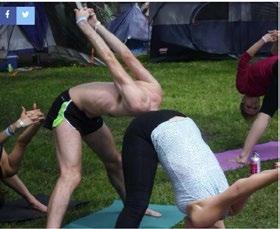
First, read your full policy, especially if your business is in the hospitality, travel, healthcare, or event-based industries. Some policies could have specialized business interruption coverage. For example, Wimbledon paid $2 million a year for pandemic insurance coverage and has now filed a $141 million insurance claim. Look to see if your policy has an exclusion for viruses. If it does not, it can be argued that your insurance carrier did not intend to exclude this type of coverage.
If you have already filed a claim with your business insurance company based on a COVID19 reason, it likely has been or will be rejected by the insurance company based on several arguments. Whether you have already filed a claim or are interested in filing one, it is best to meet with an experienced attorney so that you can have a better understanding of your rights as the insured, as well as your policy and its exclusions.

WHAT DAMAGES CAN BE CLAIMED FOR COVID-19?
Even if a business does not make a profit, it can make a claim for the damage caused by the coronavirus outbreak. The claim can include net profit, overhead, and labor. Typical coverage length is as follows per policy/claim type: Business interruption—12 months; Civil authority—One month; and Dependent Property Coverage—12 months.
Business owners might also be entitled to coverage for other losses. For instance, they may be entitled to benefits needed to limit the suspension of business or to repair or replace property or extended business income losses to cover when the business is operational until it returns to regular activity and profits.
CURRENT LITIGATION
As of late May 2020, 120 lawsuits are pending nationwide against 33 different insurance carriers, including insurance giants like USAA, State Farm, Liberty Mutual, Nationwide, American Family, Farmers, Twin City Fire Insurance, and Hartford. Many more lawsuits are expected as claims are filed and subsequently denied. Lawsuits already in progress include multi-district litigation cases and class action lawsuits. Nearly 40 of these are both federal and state class-action suits.
Some attorneys are offering to represent claimants on a contingency basis, meaning they only get paid if they obtain a recovery for your financial business losses. It is important to pursue this matter sooner rather than later as many policies require claimants to file within 30-60 days; however, sometimes, the law provides additional time. You need to know that you have rights under your insurance policy. Your insurance company has an obligation to your business to fulfill its duties under your business insurance policy. You should seek legal counsel to protect your rights during this economically uncertain and challenging time in history. n
/ THE NETWORK / JULY/AUGUST 2020 - 47 -
DIVERSI NS F-STOP
ROSE-MARY RUMBLEY rosetalksdallas@aol.com
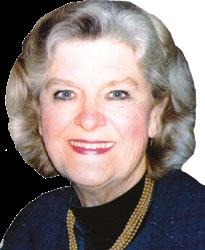
Rose-Mary Rumbley has written three books about her native city – Dallas. She has also written “WHAT! NO CHILI!” and a book about the 300th anniversary of the invention of the piano. She has appeared on the stage at the

Dallas Summer Musicals and at Casa Mañana and was head of the drama department at Dallas Baptist University for 12 years. Today she is on the speaking circuit and teaches drama classes at Providence Christian School. Her loving views of Texas history appear in every issue of

JOHN FRÉMONT –EXPLORER, MILITARY OFFICER AND POLITICIAN

The spanish came To Texas in 1517 when Cabeza De Vaca landed on the Gulf Coast - where Orange, Beaumont, and Port Arthur stand today.

Columbus with his Spanish sailors always claimed that they were seeking gold, but at the same time, they were spreading the message of the Christian gospel. So, the Spanish explorers named their missions/towns for the Saints - San Antonio, San Benito, San Jacinto - all with saintly names. There was one mission named for Jesus Christ himself - Corpus Christi.
California was settled by the Spanish with the same determination. The first Spanish settlement in California was in 1769, San Diego. Then, in no time, there was the City of Angels, Los Angeles. Later came more--San Mateo, Santa Barbara, San Francisco.
In 1821, coming from Connecticut to claim and settle the land in Texas was Stephen F. Austin. Later, there was James Fannin, the Alamo heroesJim Bowie, Davy Crockett, James B. Bonham, and William B. Travis - and for the climax, Sam Houston, who in 1836 declared the land to be The Republic of Texas.
The same thing happened in California a little later.
California was invaded by pioneers, one being James Charles Frémont, who spoke from a flatbed wagon in St. Louis, which was as far west as anyone went in those days, asking for men to "Go west, young man. Go west" - a statement often accredited to Horace Greely, the editor of the New York Tribune. Frémont made the statement while standing on a wagon with his freed slave, Jacob Dodson, who stayed with Frémont for all of his
explorations. Eagerly volunteering to go with John was the famous frontiersman, Kit Carson.

One might say that John Frémont was the Sam Houston of California. Houston was about 15 years older than Frémont, but they had similar, meager backgrounds. Still, they both thought of themselves as being "special" people in spite of their humble beginnings. Sam was born in Tennessee in poverty. Frémont had a more unconventional start.
Ann Pryor, a married Virginia lady, fell in love with a visiting Frenchman, Charles Fremon, who taught the French language and French dancing. Quite the dandy! Ann's husband confronted her about the affair. She left him and followed the Frenchman to Savannah where John was born in 1813. They moved to Nashville where she bore two more children. The family struggled financially, and things got much worse when Charles Fremon died.
When John was 18 years old, with a feeling that he was better than most, he added a "t" and an accent mark to his last name – making it Frémont, a special French name! John always thought of himself as exceptional, uncommon and notable, and those who knew him thought so, too. He was in Charleston when he met a man who was captivated by his charm and wound up paying for his schooling. Another man was willing to pay for his lessons in Greek and the theatre. John then entered the College of Charleston, did well, and was asked to speak at the graduation ceremony.
His next mentor in Charleston was Joel Poinsett, a physician and the ambassador to Mexico, who became known for bringing back to the US the gorgeous red flower which blooms at Christmas

time - the poinsettia! Frémont asked Poinsett to recommend him for the position of teacher of mathematics for the US Navy, which he did, and John was sent to St. Louis to work with Robert E. Lee in his mapping of the waterfront.
John made a name for himself and, as a consequence, connected with the influential Missouri Senator Thomas Hart Benton. The Senator invited John for dinner at his home where he had two beautiful daughters. Benton thought the older daughter would be a perfect match for Frémont, but John fell in love with the younger one - Jesse, age 17. After some time, they eloped.
A French map maker, Nicolette, directed them to a priest. The senator was furious and ordered John out. Jessie stood her ground. "Whither thou goest, I will go." The senator relented, and they stayed together. The senator had a dream that the US would stretch all the way to the Pacific Ocean. Little did he know that his young son-in-law was going to fulfill his dream of finding this way to the West!
Steve Inskeep, a well-known news reporter for National Public Radio, has written a great book about Jessie and John Frémont - The Imperfect Union In vivid detail he tells of the five journeys that John made to California. It was John Frémont who claimed the west for the United States. He was loved. He was a celebrity. He was nominated by the Republican Party as its candidate for President in 1856 (the first Republican nominee for president ever). And he was going to win… but he didn't. James Buchanan, the Democrat won.
This was the only election in the history of our country where a political party didn't nominate the incumbent as their candidate and still won the election. Franklin Pierce was out. James Buchanan was in.

Then a third party evolved (the Know Nothings) with their candidateformer President Millard Fillmore - who had been elected vice-president and became [the 13th] president when Zachary Taylor died. The issues were slavery and expansion. There were people who didn't want to bring the new territories into the United States.

The Democrats wanted the new states to come in as slave states; the Republicans wanted to totally abolish slavery. And the Know Nothings didn’t want immigrants to come into the U.S. at all. Expansion just might bring in "not wanted people." The party fell to pieces before the election was over. Frémont lost the southern vote, and even though he got quite a few popular votes, he lost the election.
Abe Lincoln was elected in 1860 and the Civil War began. John served in the Union Army, but his heart was always in the west. While he was in California, he had acquired some property with gold, but he lost his riches in the panic of 1873.There was over speculation in the railroad industry. He and Jessie spent their last days together in California. Their money then came from Jessie's writings, which were widely read and loved. John Frémont died in 1890 at the age of 77.
Mount Fremont in Wyoming, the highest peak in the Rockies (at 13,745 feet), is named for him. He climbed it in 1842. n
- 48 - / THE NETWORK / JULY/AUGUST 2020
“It
is more difficult to give money away intelligently than to earn it in the first place.”
(Andrew Carnegie in The Gospel of Wealth, 1889)
é Alvar Nuñez Cabeza de Vaca
é Thomas Hart Benton
éJohn C. Frémont
é John and Jessie Frémont
é Joel Roberts Poinsett
THE PRESIDENTIAL ELECTION OF 1856 OKLAHOMA LAND RUSH
oVer 130 years ago, Congress agreed to open previously closed territory in Oklahoma to settlement. The event took place on April 22, 1889, and remains one of the most famous land rushes today. Settlers who took part in this rush were given the nickname “Eighty-Niners” or “Sooners.” They were responsible for developing the areas that later became Canadian, Cleveland, Kingfisher, Logan, Oklahoma, and Payne counties in Oklahoma.
Nominee: James Buchanan
Party: Democratic
Home state: Pennsylvania
Running mate: John C. Breckinridge
Electoral vote: 174
States carried: 19
Popular vote: 1,836,072
Percentage: 45.3%
The 1856 uniTed sTaTes presidential election was a three-way election.
Democrat James Buchanan defeated Republican nominee John C. Frémont and Know Nothing (a/k/a American) party nominee Millard Fillmore.

This was the only time in U.S. history in which a political party denied re-nomination to the incumbent President (Franklin Pierce) and won. Pierce was widely unpopular due to the ongoing civil war in Kansas Territory. Slavery, though not its abolition, was the main issue. The Republican party, opposed to the extension of slavery, and the nativist Know Nothings competed to replace the moribund Whig Party as the primary opposition to the Democrats. The 1856 Republican National Convention nominated a ticket led by Frémont, an explorer and military officer who had served in the
Nominee: John C. Frémont
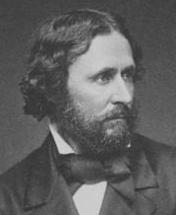
Party: Republican
Home state: California
Running mate: William L. Dayton
Electoral vote: 114
States carried: 11
Popular vote: 1,343,345
Percentage: 33.1%
Mexican–American War. The Know Nothings, who ignored slavery and instead emphasized anti-immigration nominated a ticket led by former Whig President Millard Fillmore. Severe domestic political turmoil at the time of the election was clearly represented by the nominations of Buchanan and Fillmore, who appealed in part because of their recent time abroad and the ability to avoid social issues.
The Democrats endorsed popular sovereignty as the method to determine slavery's legality for newly admitted states. Frémont decried the expansion of slavery, while Buchanan warned that the Republicans were extremists whose victory would lead to civil war. The Know Nothings attempted to present themselves as the one party capable of bridging the sectional divides. All three major
Nominee: Millard Fillmore


Party: Know Nothing
Home state: New York
Running mate: Andrew J. Donelson
Electoral vote: 8

States carried: 1
Popular vote: 873,053
Percentage: 21.5%
parties found support in the North, but the Republicans had virtually no backing in the South.
Buchanan won a plurality of the popular vote and a majority of the electoral vote, taking all but one slave state and five free states. His popular vote margin of 12.2% was the greatest margin between 1836 and 1904. However, the election was far closer than it appeared: if Fillmore had won any two of Kentucky, Tennessee and Louisiana (or all three) and Frémont had won Illinois - a total shift of less than 25,000 votes - a contingent election would have been required in the House of Representatives, controlled by a new coalition of inchoate parties united in opposing the Democrats.

Frémont won a majority of electoral votes from free states and finished second in the nationwide popular vote, while Fillmore took 21.5% of the popular vote and carried Maryland. The Know Nothings soon collapsed as a national party, as most of its anti-slavery members joined the Republican Party after the 1857 Supreme Court ruling in Dred Scott v. Sandford. 1856 also proved to be the last Democratic presidential victory until 1884, as Republicans emerged as the dominant party during and after the Civil War. n
The land offered for settlement in the Oklahoma Land Rush of 1889 was called the “Unassigned Lands” and originally belonged to Native American tribes. This land was held by the federal government until the Indian Appropriations Act of 1889 was passed. This act allowed President Benjamin Harrison to open two million acres to settlers.
When the Homestead Act was signed into law by President Lincoln in 1862, settlers could claim up to 160 acres each if they lived on and improved the land. This was the American dream for tens of thousands of people across the United States. When land was opened for settlement, they all came to stake their claims. n
DIVERSI NS BOYCOTT
Please boycott and do not use these bills. They have slaveholders on them!



Send

- 49 - / THE NETWORK / JULY/AUGUST 2020
If procrastinators had a club, would they ever have a meeting?
them to me at the White House and I will see to it that they are disposed of properly.
YOU NEED (OR MIGHT WANT) TO KNOW EGAL VIEW
ANTHONY J. BARBIERI ajb@kesslercollins.com

WHAT IS AT WILL EMPLOYMENT?

Such a contract will usually require the employer to send notice before the employee can be terminated.
unTil The early parT of the 20th century, it was common to employ someone for a fixed period of one year. That practice ended long ago, and the more common practice now is to hire employees on an at-will basis. In most states, including Texas, every employee is presumed to be an at-will employee. There are generally two exceptions: (1) employees with certain types of employment contracts, and (2) most union members. In an at-will situation, either the employer or employee may terminate the employment relationship at any time, with or without warning, and for good cause, bad cause, or no cause.

Very few employees actually have employment contracts for a fixed period of time. Some employers require signed contracts, but most of them address issues such as keeping the employer’s information confidential, not competing against the employer, and not soliciting its customers or other employees. Just because an employee signs a contract to this effect, that contract alone does not change their status as an at-will employee, unless it specifically changes the status.
In order for a contract to change an employee’s at-will status, it must expressly modify the “at-will” employment status in “clear and specific” language. Usually these contracts have a specific time period for which the employee is to be employed, and specific grounds for how the employee will be terminated. For example, some contracts state that the employee can be terminated if he or she breaches company policy, gets arrested or convicted of certain crimes, or fails to satisfy performance goals.
Usually employment contracts are written and signed by all parties. Texas law, like most other states, requires that if the employment term is to last for one year or more, the contract must be in writing to be enforceable. Aside from that, oral contracts may be enforceable, but it is difficult to prove the specifics of oral contracts because memories often fade – sometimes unintentionally, sometimes conveniently. Remember: in an employment relationship, an oral contract isn’t worth the paper it’s written on!
It is also illegal to fire an employee for “retaliation”. The term “retaliation” essentially means that an employer cannot fire an employee because the employee lawfully exercised his or her rights. For example, an employee cannot be fired because he or she filed a workers’ compensation claim, or because he or she filed a complaint with the federal government stating that the employer failed to pay overtime wages. Other “retaliation” laws – referred to as “whistleblower protection” – protect employees who report that their employer committed an unlawful act or failed to follow applicable laws. Recently the National Labor Relations Board, an arm of the federal government that we typically associate with employer-union issues, has ventured into the non-union employee realm and issued rulings and guidance indicating that employers cannot take adverse action against any employee (at will or not) who exercises his or her right to discuss the terms and conditions of employment with other employees – either personally or through social media. This is a new area of law with very gray parts, so before an employer issues a policy or revises an employee handbook, it would be a good idea to check with legal counsel knowledgeable in labor law.
TERMINATING AT-WILL EMPLOYMENT
Just because an employment relationship is “atwill”, the employer doesn’t have carte blanche to fire the employee. There are a variety of laws that make it illegal to fire employees for certain reasons. For example, employers are prohibited from terminating employees due to discrimination or retaliation. Accordingly, an employer with fifteen or more employees cannot fire an employee because of, among other things, the employee’s race, color, sex, religion, or national original. Other types of employees – (e.g., pregnant workers, older workers, disabled persons, etc.) - may also be protected by various state and federal laws. These protections also cover employees who take leave under the Family and Medical Leave Act. All told, there are a host of federal and state laws that protect approximately thirty different characteristics of employees.
Employers should still document at-will employees’ actions and misconduct. If any employee violates policy or makes mistakes, it is important to document the incident. Likewise, it is also important to document an employee’s termination, even if it is at-will, in order to support the decision in the event the employee later claims he/she was fired for an unlawful purpose.

/ THE NETWORK / JULY/AUGUST 2020 - 50 -
Anthony J. Barbieri is a shareholder of Kessler Collins, PC in Dallas, Texas. He is a Fellow of the Litigation Counsel of America and a member of the State Bar of Texas, Dallas Bar Association and the American Bar Association. He is also a Contributing Editor of .
The voices in my head may not be real, but they have some good ideas!
INDEPENDENT CONTRACTORS

Independent contracts are treated differently than employees. The “at-will” rules that govern employees do not apply to independent contractors. Instead, the length and termination of an independent contractor’s relationship is governed by the terms of its agreement with the company. However, employers often utilize independent contractors as employees in disguise so the employer can evade paying benefits, payroll taxes and overtime-wages.
There are various state and federal laws governing whether or not an independent contractor is really an employee. Improperly classifying employees as contractors in an attempt to reduce overhead is not only unfair to the worker but creates inequality in the employer’s business to the extent its competitors are abiding by the law. To address this issue, on July 15, 2015, the U.S. Department of Labor (DOL) issued further “guidance” on determining whether a worker is an independent contractor or an employee. This is
in addition to existing federal laws. Specifically, the DOL’s guidance focuses on what it calls an “economic realities test” to distinguish employees from contractors. This test has six factors, namely: (1) whether or not the work is an integral part of the employer’s business; (2) whether the worker’s managerial skills affect her opportunity for profit or loss; (3) whether the worker retained on a permanent or indefinite basis; (4) whether the worker’s investment in the job is relatively minor as compared to the employer’s investment; (5) whether the worker exercises business skills, judgment, and initiative in the work performed; and (6) whether the worker has control over meaningful aspects of the work performed. While all of these factors must be considered when making this determination, the DOL finds some of them more compelling than others, including, for example, whether the contractor is performing work that is integral to the business. The DOL’s ultimate inquiry is whether the worker is “economically dependent on the employer or truly in business for him or herself.”
Of particular significance to the real estate world, the DOL recognizes construction and janitorial/housekeeping providers as being particularly prone to misclassifying employees as contractors. So be on the alert!
UNIONS & RIGHT TO WORK LAWS
Many union members are not at-will employees. Some unions enter into collective bargaining agreements (CBAs) with employers. Most CBAs
limit the employer’s right to fire the employee, and provide for separate rights and remedies for employees that are wrongfully terminated. Normally, that process is handled through the union’s grievance procedures.


Some employees often confuse the concepts of “at-will” employment and “right to work” employment. The two concepts are really not related. A right to work law protects an employee’s right to decide whether or not to join or financially support a union. Currently, 25 states, including Texas, have right to work laws. Most of these laws state that a worker cannot be required to join or pay dues to a union. There are a few exceptions to this, for example, employees of airlines and railroads, and employees working on certain federal property, may be required to pay union fees. Further, most right to work laws allow employees to resign from a union without penalty, but still require the union to provide certain benefits to the employee after they quit the union, such as covering the employee by the CBA.
While at-will employment gives both employer and employee certain freedoms, it is not without exception or recourse. Regardless of whether you are the employer or employee, you should understand your rights and you should understand what happens if your rights are not respected. n
Ed. Note: This piece originally appeared in the September 2015 issue of . Tony Barbieri’s article on tortious interference with contracts will appear in the next issue.
DIVERSI NS PHOTOGENIC MEMORY
/ THE NETWORK / JULY/AUGUST 2020 - 51 -
Always borrow money from a pessimist. He won't expect it back.
PAUL BOND THE REALITY OF POSSIBILITIES

“We surrealists were made for these times. Seriously, I am so often in the world of my imaginings that when the outside world turns strange and unfamiliar, I tend to feel right at home. If there is an overarching message in my art, it is that the world and all possible experiences available to us are much more malleable then we allow. It is only our beliefs that limit the amount of magic we experience.”
award-winning arTisT paul bond was born in 1964 in Guadalajara, Mexico, and currently lives and works in San Clemente, CA. Bond’s oil paintings live in the spaces between dreaming and reality. Drawing from the Latin American genre of Magic Realism, his art merges allegorical, surreal and fantastic elements with realistically rendered atmospheres illuminating a world where everything is possible.


Through juxtaposing and altering familiar objects – mixed with equal parts whimsy, wonder and mysticism – his works often carry deep metaphysical and philosophical messages. Each painting is accompanied by a narrative or poem sharing his thoughts behind the symbolism.
Bond’s work has been featured in galleries and museums worldwide, and his paintings
are now in private collections throughout the US, Australia, Europe, Asia and the Middle East. Corporate collections include 20th Century Fox, Warner Bros & NBC Studios, Royal Caribbean International, Marriott Hotels and Scripps Hospital. n
/ THE NETWORK / JULY/AUGUST 2020 - 52 -
01 ARTCH TECTURE
A diplomat is someone who can tell you to go to hell in such a way that you will look forward to the trip.
02
To see more of Paul’s originals, prints and other products, as well as his exhibit schedule, please visit www.paulbondart.com







WHY ARTCH TECTURE ?
Great art is among the most sublime, meaningful, and redeeming creations of all civilization. Few endeavors can equal the power of great artwork to capture aesthetic beauty, to move and inspire, to change perceptions, and to communicate the nature of human experience. Great art is also complex, mysterious, and challenging. Filled with symbolism, cultural and historical references, and often visionary imagery, great artworks oblige us to reckon with their many meanings.
Architects and designers (many of our readers) have a lot of influence on the way we perceive the world. A structure often plays a significant part in how we experience a place. (Think of a restaurant, a museum, an arena, a stadium... even an office building - virtually anywhere!) The interior design impacts our sensory perception, our comfort, and our physical connection and there is also artistry in the exterior design. (That’s why we call it artchitecture.)

/ THE NETWORK / JULY/AUGUST 2020 - 53 -
01/ The Waterhouse. 02/The Day Namotus Ship Came In. 03/ An Allegory on the Principles of Meditation. 04/In Between Here and Not Here. 05/ The Remarkable Circumstantial Adaptability of Man. 06/Interpretations of Home. 07/The Buoyant Irony of Mans Search for Meaning. 08/When We Listen for the Passing of Time. 09/The Girl Who Circumnavigated the World in a Dream of her Own Making. 10/ With Keen Awareness of the Power of First Impressions.
Hospitality: making your guests feel like they're at home, even if you wish they were. 03 05 06 08 07 04 09 10
THE SUPERMAN CURSE
The superman curse refers to a series of supposedly related misfortunes that have plagued people involved in adaptations of Superman in various media, particularly actors who have played the role of Superman on film and television. The "curse" is frequently associated with George Reeves, who starred in Adventures of Superman on television from 1952 to 1958, and died of a gunshot wound at age 45 under disputed circumstances (officially ruled a suicide); and Christopher Reeve, who played the superhero in four theatrical films from 1978 to 1987, was paralyzed in a 1995 horseback riding accident, and died nine years later at age 52 from heart failure.

The curse is often invoked whenever misfortune is experienced by actors and other personnel who work on Superman adaptations, so much so that some talent agents cite the curse as the reason for the difficulty in casting actors in the role in live-action feature films. A more realistic explanation for the alleged 'curse' is that given the high number of people involved in the many adaptations and treatments of the Superman story over the years, a number of significant misfortunes would inevitably occur, as they would do in any substantial sampling of random individuals.

Kirk Alyn played Superman in two low-budget 1940s serials but failed to find work afterward because he was too closely identified with the role. As a result, he was relegated to voiceovers, commercials, and uncredited screen roles. He later appeared as Lois Lane's father in the 1978 Superman film. He had Alzheimer's disease later in his life and died in 1999 at the age of 88.
Lee Quigley, who played Superman as a baby in the 1978 film, died in 1991 at age 14 of solvent abuse.

George Reeves played Superman in the 1951 film Superman and the Mole Men and the ensuing television series Adventures of Superman. Like Alyn and Reeve, he was too closely associated with the role to find further work. On June 16, 1959, days before he was to be married, Reeves was found dead of a gunshot wound at his home with his gun near him. The death was ruled a suicide, but controversy surrounds the death, as Reeves's fingerprints were never found on the gun, and he had been having an affair with the wife of MGM exec Eddie Mannix. It was Reeves's death that inspired the conspiracy theories and the urban legend of a curse associated with the character.

Christopher Reeve played Superman/Clark Kent in the Superman film series, Superman: The

Movie (1978), Superman II (1980), Superman III (1983), and Superman IV: The Quest for Peace (1987). Like Kirk Alyn, Reeve was so closely identified with the character that it was difficult for him to acquire lead parts in other films and was largely relegated to Superman sequels and supporting roles. He was paralyzed from the neck down after being thrown from his horse in a cross-country equestrian riding event in 1995. He died in 2004 aged 52. No official autopsy was performed on the actor, but both his wife and his doctor believed that an adverse reaction to a drug caused Reeve's death.
Dana Reeve (the widow of Christopher Reeve), despite being a non-smoker, died of lung cancer in 2006 at the age of 44.
Marlon Brando, who played Jor-El in the 1978 film, is cited for the misfortune he suffered in his private life, such as his son’s shooting of his half-sister’s boyfriend in 1990 and subsequent five-year imprisonment, his daughter's 1995 suicide and his later reclusiveness. He died in July 2004.

Margot Kidder, who played Superman's love interest Lois Lane opposite Christopher Reeve, had bipolar disorder. In April 1996, she went missing for several days and was found by police in a paranoid, delusional state. She died in 2018 in Livingston, Montana after a drug and alcohol overdose. Her death was ruled a suicide.

Comedian Richard Pryor, who had previously had a drug addiction that led to a nearfatal suicide attempt, starred as villain Gus Gorman in 1983’s Superman III, but later took Superman's side near the end of the movie and became a hero. Three years later, he announced that he was diagnosed with multiple sclerosis. He died of a heart attack in 2005 at the age of 65.

Brother Max and Dave Fleischer of Fleischer Studios, who produced the Paramount Superman
cartoons began to quarrel with one another and their studio suffered financial disaster. After selling to Paramount Studios, the new owners fired the two brothers. One of them died in poverty.
The curse was invoked after three people involved in the creation of the Superman Returns DVD were injured. One of them fell down a flight of stairs, another was mugged and physically assaulted, and a third smashed into a glass window.
Allison Mack, who played Chloe Sullivan on the TV series Smallville, was accused of sex trafficking and forced human labor and was arrested in April 2018 on those charges. An article on Fox News speculated whether this was related to the curse.
Well-known Hollywood Boulevard Superman Christopher Dennis battled drug use and homelessness for several years. He was subsequently found dead inside a clothes donation box in 2019 at the age of 52.
Lane Smith played Perry White in The TV series Lois & Clark: The New Adventures of Superman. Smith was diagnosed with amyotrophic lateral sclerosis (a/k/a ALS or Lou Gehrig's disease) in 2004 and died of the disease at his home in 2005 at the age of 69.
Kevin Spacey played Lex Luthor in Superman Returns. In October 2017, Spacey was accused of several sexual harassments and assaults from various men. including actor Anthony Rapp who accused Spacey of making a sexual advance toward him in 1986, when Rapp was 14. As a result of the allegations, Netflix cut ties with Spacey, shelving his film and removing him from the last season of House of Cards.
Bryan Singer directed the 2006 film Superman Returns. When Singer directed the Queen biographical film Bohemian Rhapsody (2018), he was fired from the film shortly before its completion, for absence and clashing with the cast and crew.
Jerry Siegel and Joe Shuster, the writer and artist who co-created Superman, sold the rights to their creation to DC Comics for a relatively small amount of money. Despite the repeated efforts over the course of the rest of their lives to recover legal ownership of Superman, and a share in the immense profits that the character brought for DC Comics, DC's copyright on the character was renewed. By the 1950s, Shuster's worsening eyesight prevented him from drawing, and he worked as a deliveryman in order to earn a living. By 1976, Shuster was almost blind and living in a California nursing home. In 1975, Siegel launched a publicity campaign, in which Shuster participated, protesting DC Comics' treatment of him and Shuster and eventually Warner Communications reinstated their byline dropped more than 30 years earlier Shuster dies in 1992 and Siegel died in 1996. n
/ THE NETWORK / JULY/AUGUST 2020 - 54 -
Money can't buy happiness, but it sure makes misery easier to live with.
Call Me What? will return next issue and In the Loop will return when COVID-19 allows the scheduling of in-person association events to resume.
With the travel and tourism industries gutted by COVID-19 and travelers opting to stay close to home this summer, the personal-finance website WalletHub today released its report on 2020’s Best & Worst Cities for Staycations, as well as accompanying videos.
They compared more than 180 cities across 15 key indicators of a fun-filled yet wallet-friendly staycation, with data set ranges from parks per capita to the average home square footage and the idealness of summer weather. And Texas scored 3 of the top ten – including the #1 spot – Plano! (Grand Prairie was #8 and Austin was #9.) Kudos to all! To view the full report and your city’s rank, go to: wallethub.com/edu/best-cities-for-staycations/ 4341/

SH UT-OUTS
Jonathon “JJ” Jones of Crescent Property Services LLC was recently elected president of Texas Building Owners and Managers Association based in Austin. He is the manager of Greenhill Towers in Addison. Crescent’s Kris Lang is president of the BOMA Greater Dallas chapter and Angelia Franklin is president of the BOMA Fort Worth chapter. Congratulations to all!





Congratulations to Eduardo Castañeda, a designer in CallisonRTKL’s Dallas office, for being chosen as a recipient of the 2020 AIA National Associates Award. The award recognizes outstanding leaders and creative thinkers for significant contributions to their communities and

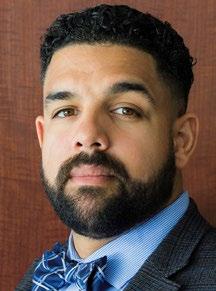
the architecture profession. Castañeda’s continued involvement and leadership in the AIA Latinos in Architecture (LIA) network has molded a community of architects and designers into a force for change in the profession at large. He has helped to form a Fort Worth Chapter of the LIA, established scholarship programs for Latino-born students interested in pursuing the field of architecture and led the creation of a book drive to provide high school students with the essential texts needed to prepare themselves for the collegiate experience that lies ahead.
YOU NEED (OR MIGHT WANT) TO KNOW IN THE N WS

Safety in Texas (1 = Safest; 25 = Avg.)
41st – “States Offering the Most Coronavirus Support” Score.
27th – Murders & Non-Negligent Manslaughters per Capita.
30th – Assaults per Capita.
42nd – Loss Amounts from Climate Disasters per Capita.
26th – Fatal Occupational Injuries per 100,000 Full-Time Workers.

34th – Fatalities per 100 Million Vehicle Miles of Travel.
In 2020, Texas is the 5th Least Safe State in America
June was National Safety Month. With the U.S. devastated by the coronavirus pandemic this year, the personal-finance website WalletHub released its report on 2020's Safest States in America, as well as accompanying videos. In order to determine the most secure states, they compared the 50 states across 53 key metrics ranging from the state’s coronavirus support to assaults per capita and the unemployment rate.
16th – Law-Enforcement Employees per Capita.
15th – Bullying Incidence Rate.

36th – Sex Offenders per Capita.
50th – Share of Uninsured Population. For the full report, visit: wallethub.com/edu/safeststates-to-live-in/4566/ n
/ THE NETWORK / JULY/AUGUST 2020 - 55 -
Some bring happiness wherever they go. Others whenever they go.
é JJ Jones.
é Jason Riegle. é Tracy Duncan. é Christy Walters.
é Kristine Lang.
é Angela Franklin.
Jason Riegle, Tracy Duncan and Christy Walters won the Duke Realty Award of Excellence for Customer Service.
Hat’s Off to Tom Hudson of Hudson Peters Commercial who earned the CCIM designation.
YOU NEED (OR MIGHT WANT) TO KNOW PROFESSIONALS ON THE
JULIE BRAND LYNCH julie@LYNOUS.com
Julie Lynch is the principal of LYNOUS, a talent management firm that provides recruiting, interim staffing and training to the real estate industry. She is also a contributing editor of .
Did you recently take a step in your career?

We want to know! editor@crestnetwork.com
01/ Hillwood promoted Mercedes Bolen to Vice President of External Affairs and Community Relations.
02/ AECOM named Nandita Kaundinya, P.E. as State Business Development Lead for North Texas.

03/ Rip Reynolds joined JLL in Houston as a Senior Vice President and Agency Lead for its Retail Group.


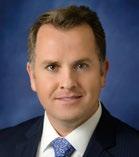

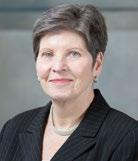
04/ Seth Kelly was promoted to Vice Chairman at CBRE in Dallas.
05/ Tommy Nelson was promoted to Senior Vice President at CBRE in Dallas.
06/ Preston Lynn was promoted to First Vice President at CBRE in Dallas.
07/ Alexandra Cullins was promoted to Vice President at CBRE in Dallas.

08/ Krista Raymond was promoted to Vice President at CBRE in Dallas.


THE FURNITURE STORE

An elderly woman entered a large furniture store and was greeted by a much younger salesman. "Is there something in particular I can show you?" he asked.

"Yes, I want to buy a sexual sofa," she said
"You mean a sectional sofa," he suggested.
"Sectional schmectional," she retorted dismissively. "All I want is an occasional piece in the living room!".
09/ Ryan Buchanan was promoted to Vice President at CBRE in Dallas.



10/ Kevin O’Boyle joined CBRE in Dallas as a Senior Associate.
11/ Michael Meaden joined CBRE in Dallas as a Vice President.

12/ Ashley Norman joined Westdale Asset Management.

13/ Norine A. Bowen joined Direct Retail Partners as Regional Vice President of Property Management.

14/ Randy Hoffman was promoted to Chief Engineer at Camelot Facilities & Property Management.
15/ Yamir Enriquez was promoted to Lead Technician at Camelot Facilities & Property Management.

- 56 - / THE NETWORK / JULY/AUGUST 2020
DIVERSI NS 01 07 13 15 03 09 05 11 02 08 04 10 06 12 14
When tempted to fight fire with fire, remember that the Fire Department usually uses water.
THE HAM

Recommended by more than 5,000 top dermatologists Guaranteed to block 98% of UVA/UVB rays Third-party tested, highest rated UPF 50+ SWIM | RELAXING | TRAVEL | FISHING & BOATING | ACTIVE | GARDEN PARTY Always UPF 50+, always sun safe. Visit us at Coolibar.com All Coolibar fabrics are recommended as effective UV protectants only for covered areas. Coolibar is the first clothing company to receive The Skin Cancer Foundation’s Seal of Recommendation. ™
bus is a vehicle that runs twice as fast when you are after it as when you are in it.

- 58 - / THE NETWORK / JULY/AUGUST 2020
A
If you are supposed to learn from your mistakes, why do some people have more than one child?
The TrusT for public land works to protect the places people care about and to create close-to-home parks— particularly in and near cities, where 80 percent of Americans live. Its goal is to ensure that every child has easy access to a safe place to play in nature. They also conserve working farms, ranches, and forests; lands of historical and cultural importance; rivers, streams, coasts, and watersheds; and other special places where people can experience nature close at hand.
Founded in 1972 with the goal of protecting land in and around cities and pioneering new
land conservation techniques, its work has expanded to include projects from the inner city to the wilderness. In cities, they’re turning vacant lots into community-designed parks and playgrounds. And we’re addressing the looming climate crisis with strategies to help reduce greenhouse gasses, promote climate adaptation, and create park-rich, climatesmart cities.
The Trust for Public Land’s ParkScore® index is the most comprehensive tool available for evaluating park access and quality in the 100 largest U.S. cities. With the permission

of and thanks to The Trust for Public Land, this is the seventh of thirteen installments of the results of that study. For Arlington, Austin, Corpus Christi, Dallas, El Paso, and Fort Worth, please see our archived editions at www.crestnetwork.com. In the issues ahead, look for Irving, Laredo, Lubbock, Plano and San Antonio. If you can’t wait to see all of the results – or want to see where your or another city rates, go to:
www.tpl.org/node/110916
- 59 - / THE NETWORK / JULY/AUGUST 2020
n
YOU NEED (OR MIGHT WANT) TO KNOW LINK : MARKET PLACE AND DIRECTORY
CARPET CLEANING: LEGAL:

EXECUTIVE SEARCH, INTERIM PLACEMENTS & TRAINING:


PAVINGS:


EXTERIOR WALL CONSULTING:


JANITORIAL SERVICES:

- 60 - / THE NETWORK / JULY/AUGUST 2020
According to the The Nielsen Company, Benchmarking Return on Ad Spend: Media Type and Brand Size Matter, magazines remain one the most trusted forms of advertising! Our readers are your customers! MADE YOU LOOK!
DIVERSI NS CLOROX

PAVINGS:

REACH YOUR FOR LESS
ROOFING:


Links listings require a 4-issue (non-cancellable) commitment

1” Full Color ad .............. $138 per issue

2” Full Color ad .............. $193 per issue

3” Full Color ad .............. $275 per issue
Give your client/friend the gift of smiles –smiles that that keep on giving.
A handsome, artbook-style, personalized volume (with your dedication page and advertisement) with over 100 pages of the best Diversions to appear in over the last decade. A waiting room or coffee table book (s)he will treasure for years to come.
Call today for availability, pricing and requirements: The CREST Publications Group: 682-224-5855


- 61 - / THE NETWORK / JULY/AUGUST 2020
THE BACK PAGE
ANSWERS FROM THE MAY/JUNE CONTEST –AW
CONGRATULATIONS
TO ALL OF OUR CONTEST WINNERS!
Brendon Burnham of Midland, TX won a copy of Rethinking Real Estate by Dror Poleg.
Talia Scott of Paris, TX won a Charge Hub by Limitless Innovations.
Rita Morales of San Antonio, TX won a copy of Shared Parking from the ULI.
Peggy McAdams of Tulsa, OK won a copy of The Psychopath Epidemic by Cameron Reilly.
Cameron Mattison of Longview, TX won a Nomad lightening cable. Dahlia Rubino of Orlando, FL won an iDevices Switch.
DIVERSI NS POLITICAL CORNER –


PART 2: HE REFUSES TO WEAR A MASK – BA-DUM-DUMB


BOLO (BE ON THE LOOK OUT) FOR WHAT'S COMING NEXT
Contributing Editor Rose-Mary Rumbley looks at the Roaring 20’s. She asks, “Will 2020 roar?” and answers “It seems to be doing just that!” On our companion History page, we look at the Three-Fifths Compromise at the 1787 Constitutional Convention about how slaves would be counted as part of the population in determining representation of the states in the House of Representatives.
Contributing Editor Angela O’Byrne’s Amazing Buildings will look at energy-positive buildings, including Powerhouse Brattørkaia, an office building in Norway that will produce twice as much energy as it consumes.
Did you know that the ampersand (&) was once a letter in the English alphabet? Well, it was. Learn more in You Need (or might want) to
Know. And you can also learn about the Origins of the Second Amendment. It seems that the pandemic has everything in upheaval, and many companies may never recover. Some were long Gone but Not Forgotten before the virus even hit. That’s what our bi-monthly contest is all about. And, to make it extra special, the prizes for the winners of that contest will be something one-of-a-kind from Hammacher Schlemmer, the most unique of all stores offering the best, the only and the unexpected. And as long as the coronavirus is still a major news story, we will continue to feature insight and perspective from industry experts.
Contributing Editor Tony Barbieri’s Legal View will examine legal issues involving tortious interference. And, with permission from and thanks to The Trust for Public Land, we will continue
to present the results of their study on parks for the sixth of thirteen Texas cities – this time for Irving. We will present a pictorial tribute to renowned architects Frank Lloyd Wright and Louis Sullivan. We’ll continue our look at the architectural treasures of American cities, this time Detroit, a city in the midst of a renaissance, and it's one that pays homage to the city's history (and has earned it the title of a UNESCO City of Design). And we'll take a look at Rotterdam, the home of Markthal (on page 30).
Of course, we will have our affiliates’ awards and special events, the Wow Factor, Diversions, By the Numbers, True Dat, You Need to Know, Political Corner, Professionals on the Move The Resource Page, Shout-Outs, In the Loop, Real Estate of the Future, and much MUCH more.

/ THE NETWORK / JULY/AUGUST 2020 - 62 -
INDEX TO OUR ADVERTISERS Anderson Paving ...................................................... 29, 60 www.andersonpaving.com Arsenal Business Collections .................................... 3 www.thearsenalcompanies.com Arsenal Companies, The Back Cover www.thearsenalcompanies.com Brydge 27 www.brydge.com Coolibar 57 www.coolibar.com Construction Consulting International 60 www.sunited.com C & P Clean 29, 60 candpclean.com Image Building Maintenance 9, 60 www.imagebuildingmaintenance.com IREM – Dallas 12 www.irem-dallas.org K Post Roof 61 www.kpostcompany.com Kessler Collins 60 www.kesslercollins.com Kyocera 11 www.kyoceranevill.com Lynous Turnkey Solutions 60 www.lynous.com Master Construction & Engineering 60 www.masterconstruction.com Recycle Across America 16 www.recycleacrossamerica.org Reliable Paving ............................................................... 2, 61 www.reliablepaving.com R.L. Murphey Commercial Roof Systems ... 61 www.rlmurphey.com Texas Environmental Inspections ...................... 27 www.txmis.com Widex 17 www.widex.com
FRIGATE
1. Aircraft Carrier // 2. Canoe // 3. Cruise ship // 4. Destroyer // 5. Dingy // 6. Ferry // 7. Fishing boat // 8. Frigate // 9. Houseboat // 10. Pontoon // 11. Rowboat // 12. Sailboat // 13. Schooner // 14. Trawler // 15. Yacht // 16. Sloop // 17. Steamboat // 18. Submarine // 19. Tugboat // 20. Raft
Some people hear voices. Some see invisible people. Others have no imagination whatsoever.
C NTEST: BUT THAT WAS YESTERDAY

As we all know, aging sucks… but nostalgia is a good thing.
The 30 pictures below are all of people you know – or you know them now. These are from when they were in high school. You can probably guess most of them because the basic look hasn’t changed. [If you need help, go to the link at the bottom and you can find them all.] It’s not cheating. Think of it as an open book (fun) test. Write their names under the pictures in the spaces provided.





























Then, scan or copy this page and send your entry to editor@crestnetwork.com or fax it to 817.924.7116 on or before August 1st for a chance to win a valuable prize. (The answers will appear in our September-October issue.)

/ THE NETWORK / JULY/AUGUST 2020 - 63 -
1. 2. 3. 4. 5. 6. 7. 8. 9. 10. 11. 12. 13. 14. 15. 16. 17. 18. 19. 20. 04 07 13 09 15 18 02 05 11 08 14 17 10 16 19 03 06 12 01 20 26 25 23 29 21 27 24 30 22 28 21. 22. 23. 24. 25. 26. 27. 28. 29. 30. Want more? Need help with the answers? Go to: www.classmates.com
...BECAUSE SOMETIMES IS WHAT YOU KNOW
We Speak Real Estate
The Arsenal Companies are a diversified consulting, educational and publishing group, dedicated to service in the real estate industry. With national reach, regional strength and local sensibilities, we serve and service large and small companies as well as governmental entities in acquisitions, dispositions, leasing, licensing, contracting, procurement, insurance certificate tracking, educational program development, mediation services and collections.
Our Contracts and Procurement Services Division provides solutions and services that help real estate owners and companies effectively manage their contractual needs and commitments. We provide industry knowledge and we practice deal facilitation rather than obstruction. Whether you are a property, facility or asset manager, your functions are integrally related to real estate contracts. Quality management is all about contracts.
Leasing
Acquisitions, dispositions, renewals, surrenders, amendments, abstracting, administration, interpretation – our professionals are experienced in residential, commercial, industrial, professional and retail leasing issues of all kinds.

Highly focused.
Highly specialized.
Highly respected.
Procurement
Supply Chain Management
Procurement Administration
Supplier Recognition Programs
RFI, RFP, RFQ Administration
Vendor/Supplier Resourcing
Vendor Reduction Programs
Customized Purchase Orders
Are the contracts for services and supplies which your organization uses prepared for your organization – or are they the vendor’s or contractor’s agreement forms? Wouldn’t you be better off if those agreements and purchase orders were revisited from your perspective? Isn’t it time you fortified your real estate related contracts?
Contract Negotiation and Drafting Services


Anyone with experience.
Don’t assume that problems won’t occur. Plan what you can do to avoid them. A small reduction in costs can be the equivalent of a substantial increase in value. We suggest ‘refinements’ to improve language and reduce direct and indirect costs. Our attorneys have successfully resolved leasing issues for both small and Fortune 100 corporations – effectuating $millions in savings.
Do you have contract issues that call out for review, interpretation and the advice of a specialist? Do you have a service contract which is about to expire and will need to be renewed or replaced? Do you have oversight of a real estate or facilities function which has been given savings targets? Have you considered ‘outsourcing’ this part of your real estate function but fear a loss of control?
We analyze the details of your proposed service contracts before they begin - while you still have leverage. Or, we can review your existing service contracts, help reveal cost efficiencies and/or savings opportunities. We look for pragmatic solutions that are sensitive to your business interests, anticipating issues that may arise, and we assist in minimizing those risks that cannot be avoided.
The Arsenal Companies
2537 Lubbock Avenue Fort Worth, TX 76109 Tel: 682.224.5855 Fax: 817.924.7116
www.thearsenalcompanies.com
Leases are highly specialized documents. A few words can make a world of difference.
ARSENAL BUSINESS COLLECTIONS







































































































































































































 MIKE FRIED mike@mytxpa.com
MIKE FRIED mike@mytxpa.com














































































































































